When things you like suddenly end, mostly, next to the ton of vivid and colorful memories mixed with nice emotions, one part of you feels empty and sad. That´s the mixture I find myself bathing right now: This year´s edition of “Pelorus Jack Ocean Trophy” is history. I am back in my hotel room and try to bring order to the rich palette of pictures and anecdotes. It was a great occasion, again, and I´d like to tell the story of this year´s VIP-sailboat race in this article. It all began one week ago, some 40 degrees Celsius, when I arrived at Athens´ Alimos Marina. Full of joy.
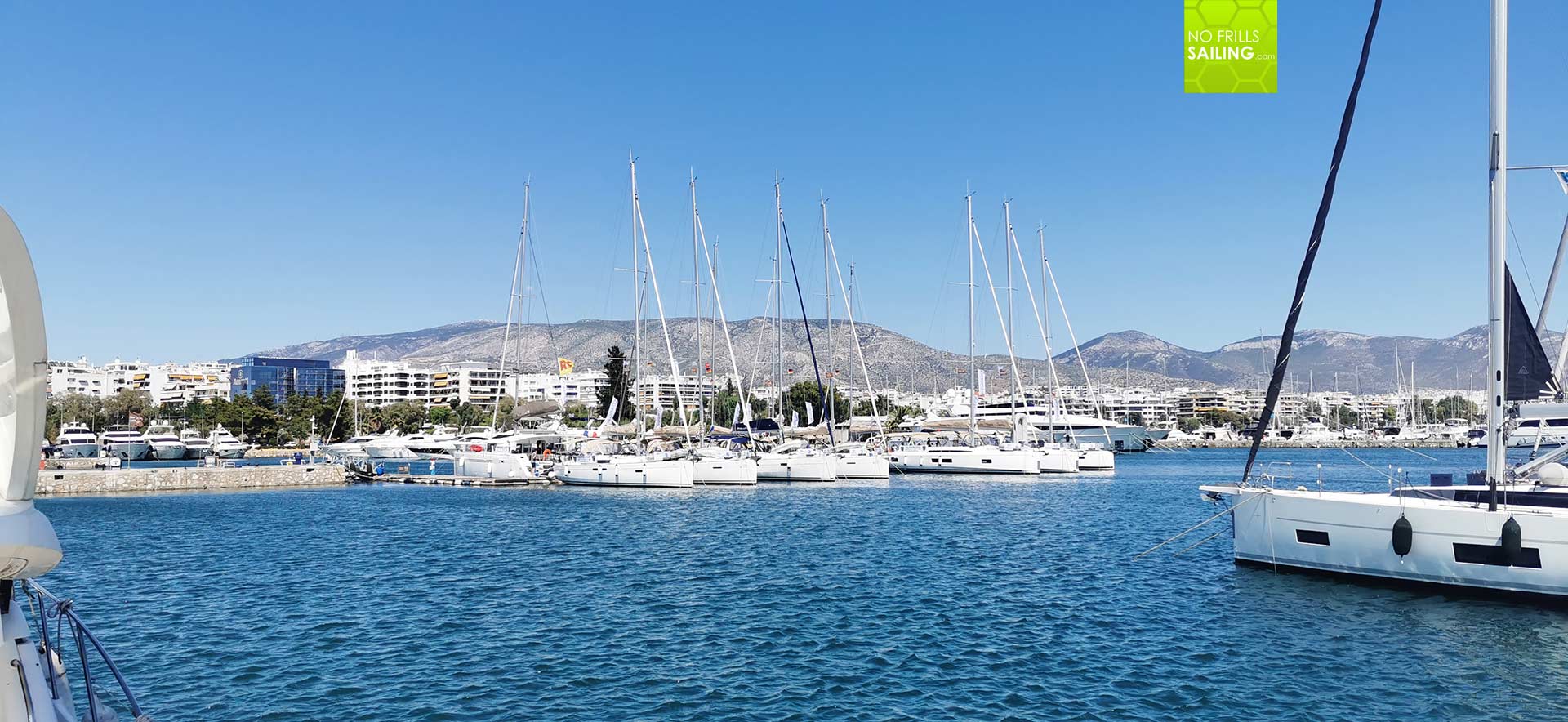
“Pelorus Jack Ocean Trophy”, for all of you dearest readers who don´t know, is the successor of the “Rose of Charity” race which itself was a successor of the “Jose Carreras Cup”. In essence, no matter the name, this race kept its character: German actors from the movies, TV and theater, come together to acquire their sailing licenses (which is called the “Academy”) in spring. They are encouraged to gain some experience the following summer season just to meet again in summer for “the race”. All is done for a good cause, as German TV accompanies their efforts and the coverage is donated to serve a good cause – later more on that.
Meet SYMI and her crew
I got into this exclusive set-up in 2017 when we helped out to replace one partner suddenly quitting his engagement. Skippering a part of the “academy” I became a part of the circus and since then was offered skippering a boat. Unforgotten my first ever race on CHEEKY LADY with a great bunch of actors (of which one became a skilled skipper himself over the years) and the great first-time in Greece after switching from Croatia on APRIL STAR just before Covid hit. Now, walking upon the jetties of Alimos Marina, I was ready to taking over my next boat: SYMI.
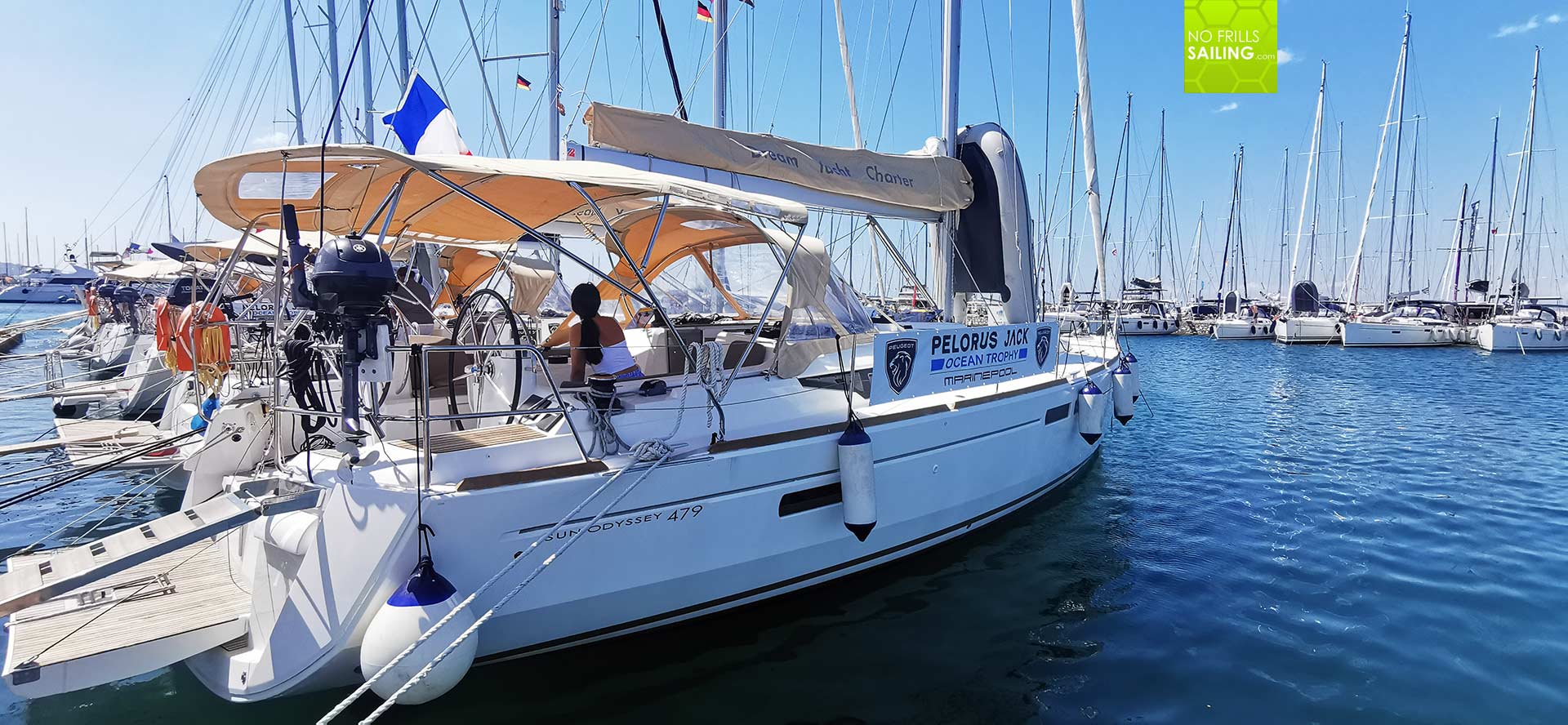
Initially I was told to receive command of a brand new Jeanneau Sun Odyssey 440 to which I looked forward to very much. As a Beneteau-specialist I rarely get the chance to sail on boats of our competitors, let alone aboard their current products, and so I wasn´t too much frustrated that my buddy skipper Florian received the Oceanis 51.1 and I was put on our sister-brand Jeanneau. But SYMI wasn´t a 440, instead, I was upgraded to a 48 feet Sun Odyssey 479 from 2018. An older boat, but bigger. And, most of all, much better equipped than most of the other boats of the Pelorus Jack-fleet, which would later be a big advantage in the race.
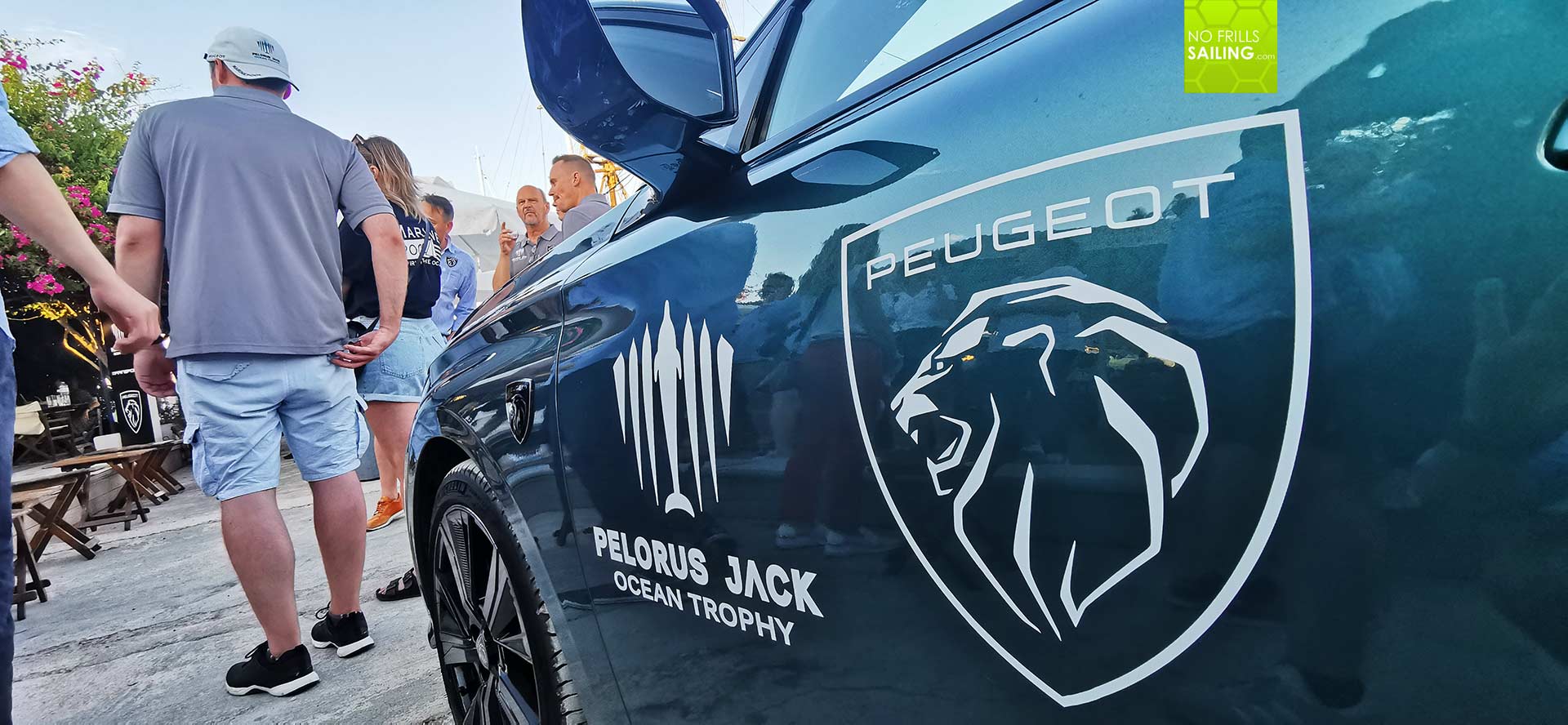
Talking about a good cause: The regatta is not just amusement for German TV-VIPs. The stories made aboard the actor´s boats are all set in a charity context. It started with German SAR, went on to Ocean Care last year, a Swiss foundation fighting for environmental protection on a political basis. This time it is the Pelorus Jack Foundation which goes on a very different approach: Hands on, not political bla-bla. This foundation channels money to the small groups on the forefront of environmental protection, as we would be able to see by ourselves later. The big-time TV-presence is of course attractive to sponsors. As such, Peugeot and long-term sponsor Marinepool are on board as well.
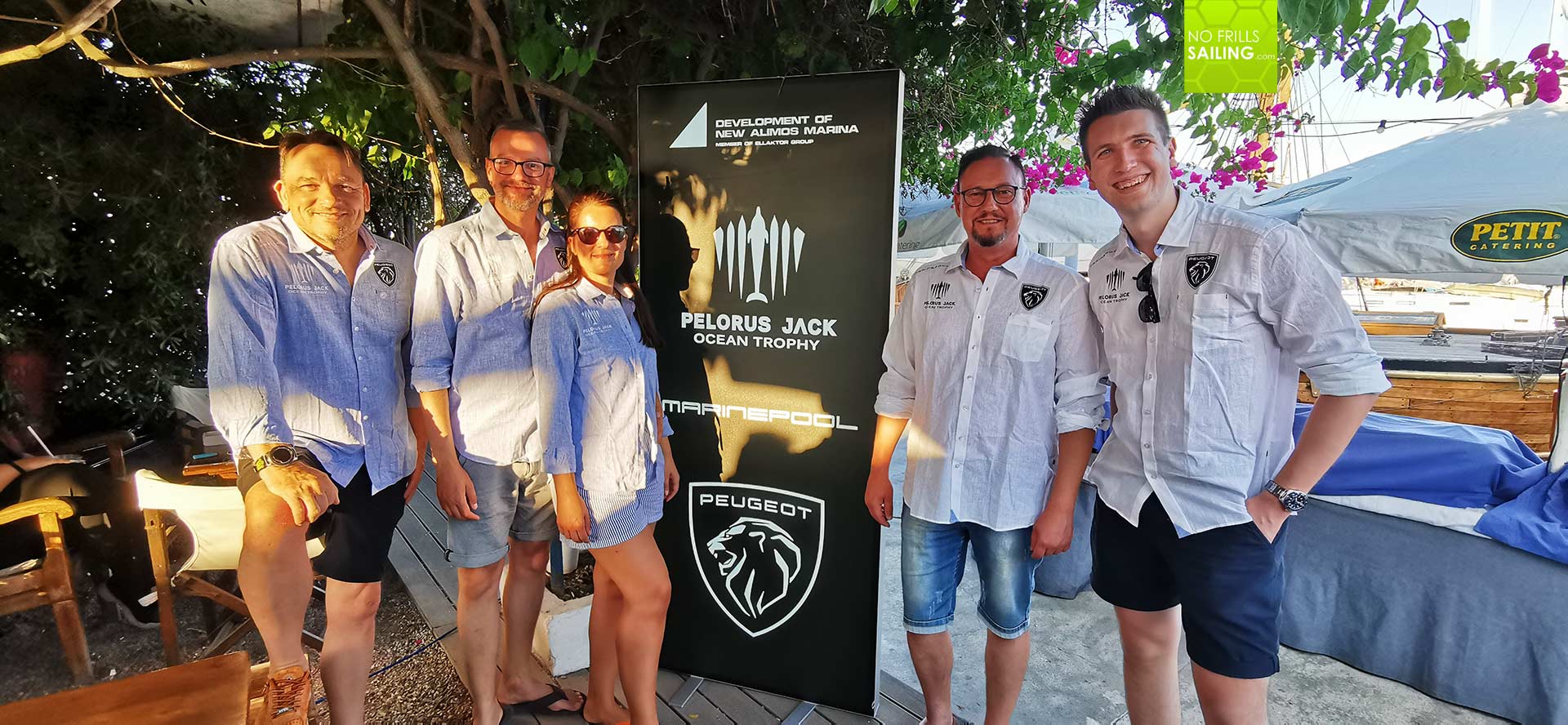
Peugeot took on the bulk of the cost, which is quite a sum for a 10 boat-fleet with 3 catamarans for the media and the race-organizer´s ribs. They do because they also have an environmental approach. I learned that right now a staggering 45% of all new car sales in Germany are electric and hybrid cars. A big surprise for me as I always thought it being around 15 to 20% max. As such, Peugeot had 2 out of the 10 boats in the competition filles with “their” staff. One of the boats was my SYMI and I was happy to welcome a party of 3 guys from Peugeot: This company offered participation to their best e-car selling employees.
Training day: Getting ready for the race
For me a new thing: This time I was about to commandeer a crew that did not consist of – reasonably half-decent – trained sailors who at least had some degree of sailing experience. As they had told me, two of my crew members had absolutely no experience in sailing, the third was a kite surfer. One of the guys had a boat license for small powerboats. Well, let´s rock. After I sent the guys introductory videos beforehand in a freshly established whatsapp-group we had the basic stuff cleared well in advance: Most of all the safety-issues and general behaviour aboard. As all arrived aboard the next day, I held a crash course in sailing.
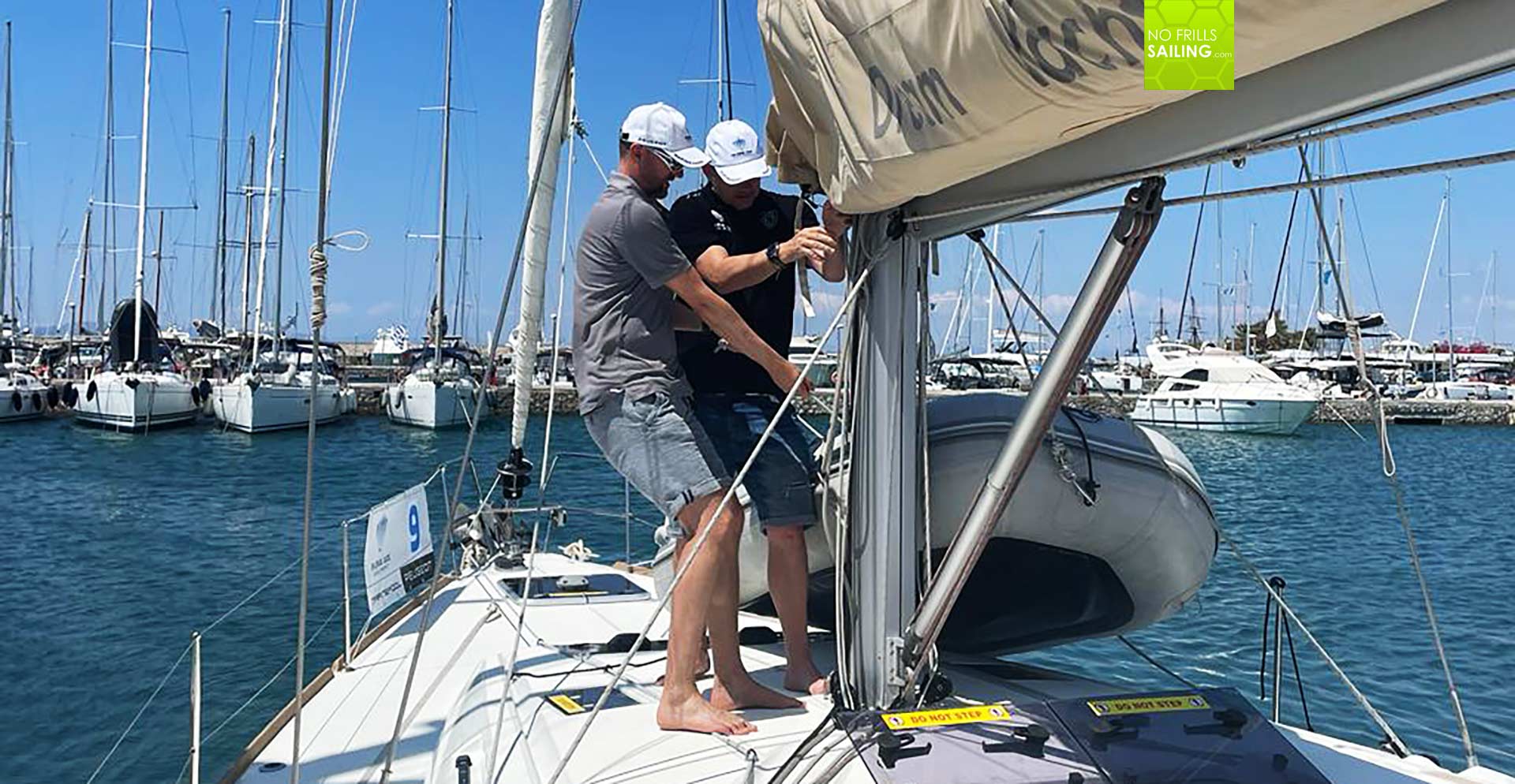
Points of sail, physics of sailing, sails trim and basic rules on the water was done in “theory” sitting around the cockpit table with a load full of sketches. The practical introduction from standing rigging to running rigging and the basic three stations (steering, jib sheets and mainsail) was done in harbour practically. As I had asked how my crew would like to spend their incentive sailing days, all in unison told me that they´d want “to win” and ail competitively rather than having a leisure time with drinks in the sun. So, happy to have such a dedicated crew, I focused my “training” on getting them ready to operate their stations in race mode as fast as I could. All three turned out to be thirsty for knowledge and after one day in Athens we all were eager to get out and race!
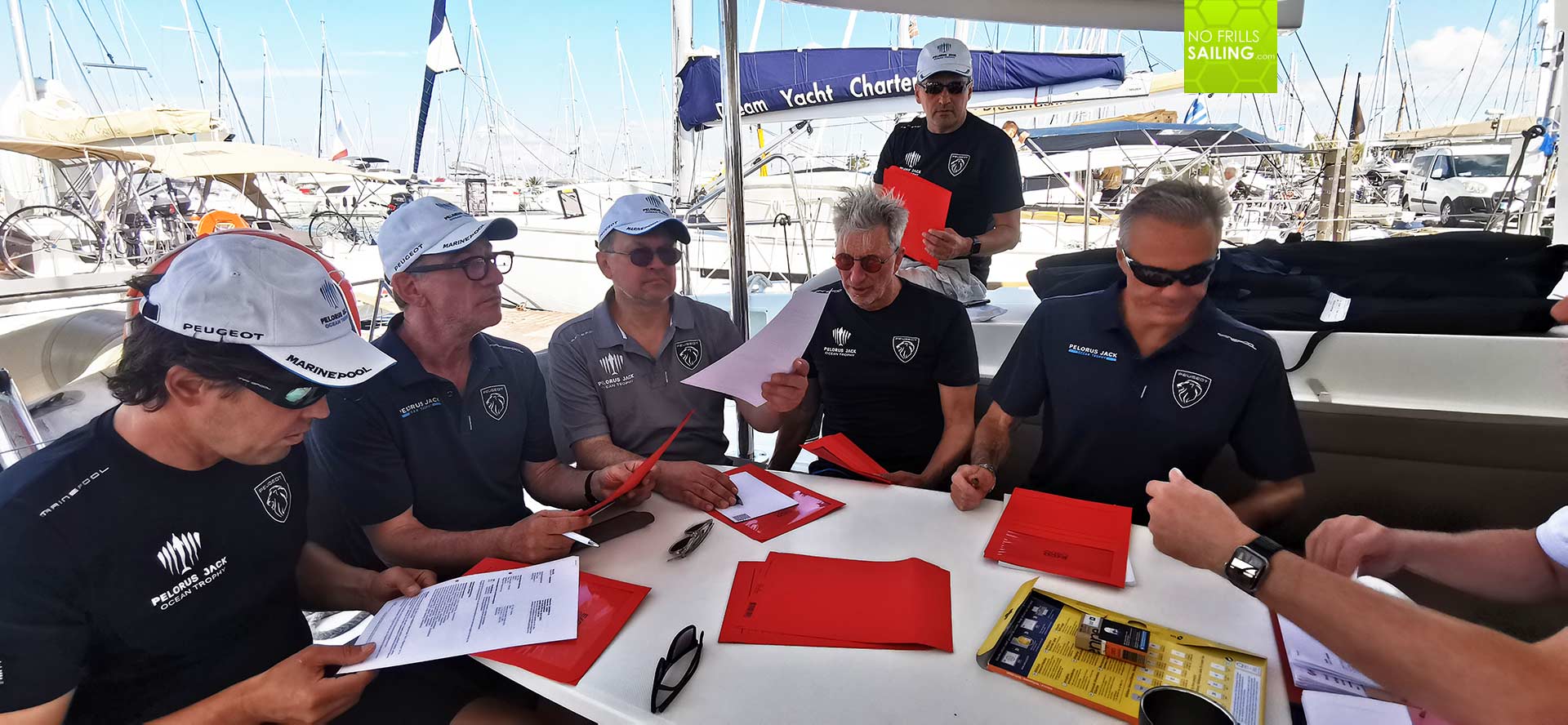
The regatta is always officially sanctioned and not self-organized. This time again, Kostas and his crew of the Greek Sailing Association were responsible for the route, start and finish lines and time measurements as well as calculating Yardstick handicaps for the ranking. Next morning all 10 skippers met for the daily briefing aboard the RC-cat (Race Committee) and the first message was that bathing was seriously not recommended due to a pest of harmful jellyfish. Not so nice. After the usual safety-instructions, we were told about the first race. Tension arose …
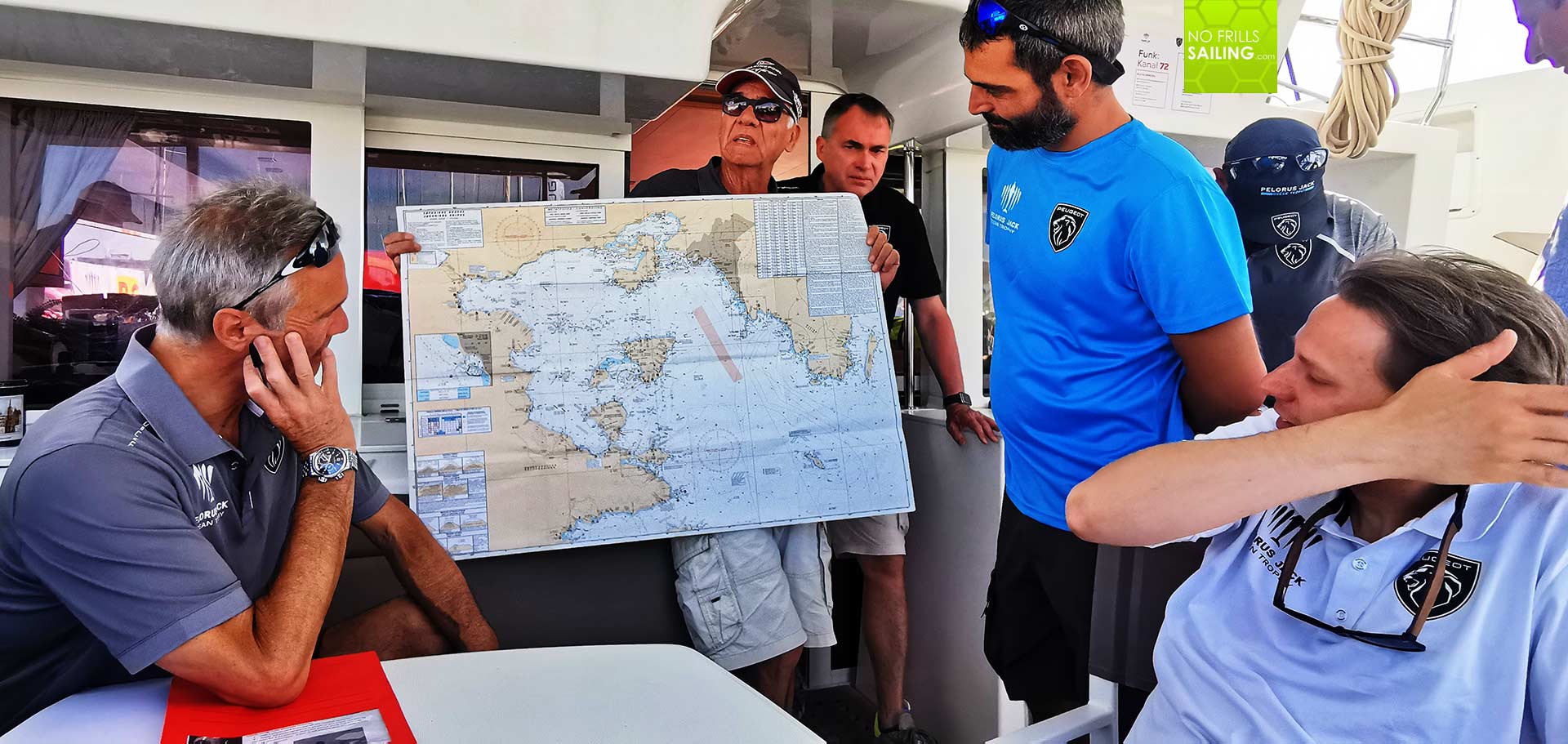
We would leave Athens Alimos Marina and head south-west passing the Island of Aegina. The starting line would be set-up at 1300 at a smaller island west of Aegina with finish in front of Epidauros harbour. A kind of straight 15 mile stretch. As usual, the trick in the Saronic Gulf during this time of the year would be to find wind. There ought to be some of it, but you never know. Also, on our first race, we´d pass the Island of Kyra, setting up the question if we´d round it left or right – where would be the wind, where wouldn´t be any? With all questions answered and even more arising, I went aboard SYMI to finally cast our mooring lines and sail out for the first time.
Race day!
In front of Alimos Marina, to and from Pireaus port, there is a busy Traffic Separation Scheme, ultrafast Cat-Ferries come and go and a large anchorage filled with bulky tankers mark obstacles amongst which you do not want to start a sailboat race attended by mostly amateur sailors. So we had a 10-mile free sailing stretch to master until reaching starting line. I planned to use these 2 hours transfer-time for a crash training course in how to sail.
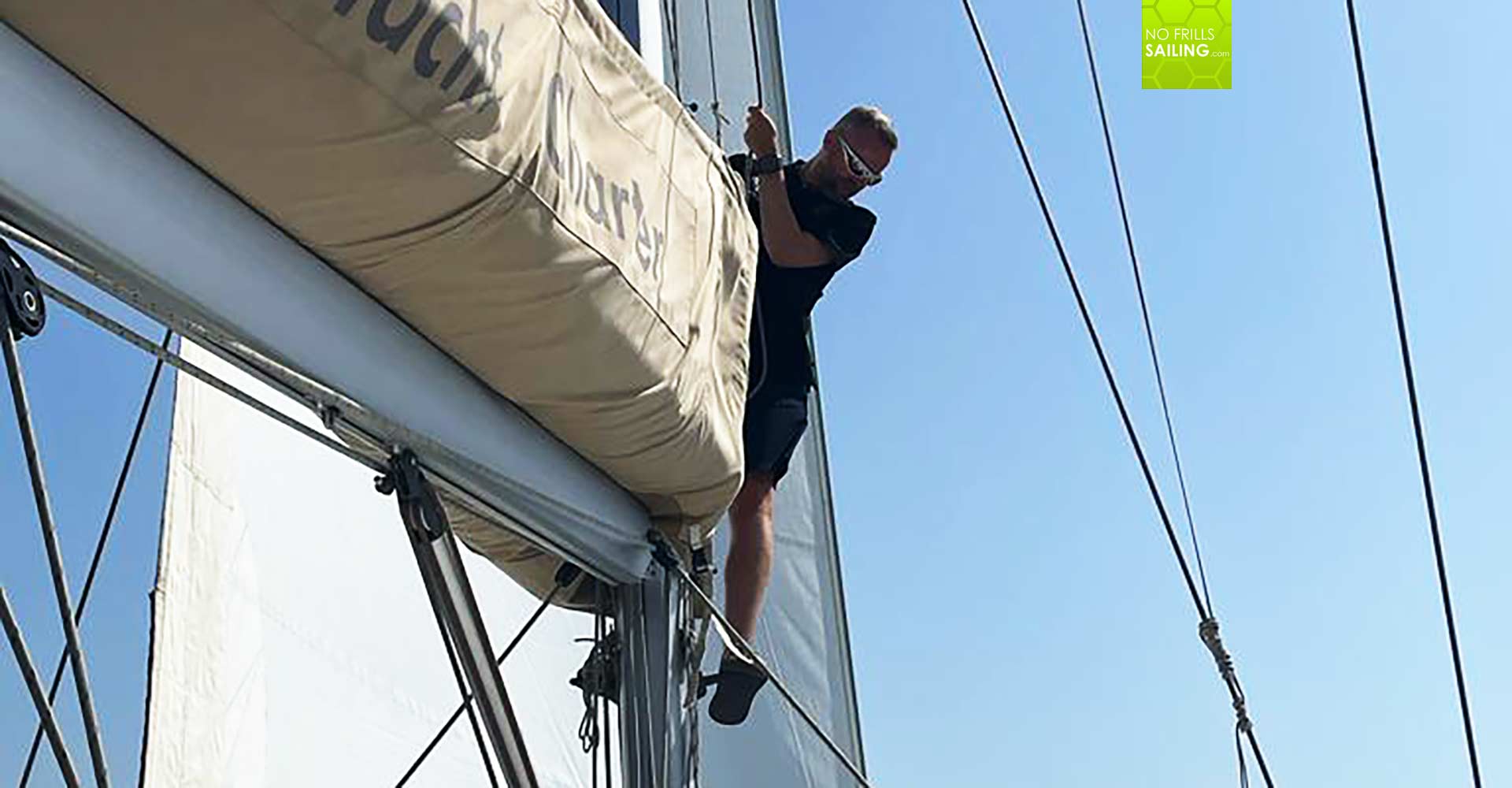
Also, for me as a skipper, I used this time to getting to know the sailing abilities of my boat, check all lines, winches, steering and such and maybe also try out a bunch of maneuvers. I didn´t wanted to start a race and not having sailed the boat once. So we took out the Genoa first, put the boat on upwind point of sailing and hoisted the main sail. Which wouldn´t go up. A quick search for the cause showed that the main halyard got entangled in the mast top – 15 minutes and some hair-raising maneuvers later we had it free. A nice demonstration of sailing skills and I was happy to having found this issue before the race started.
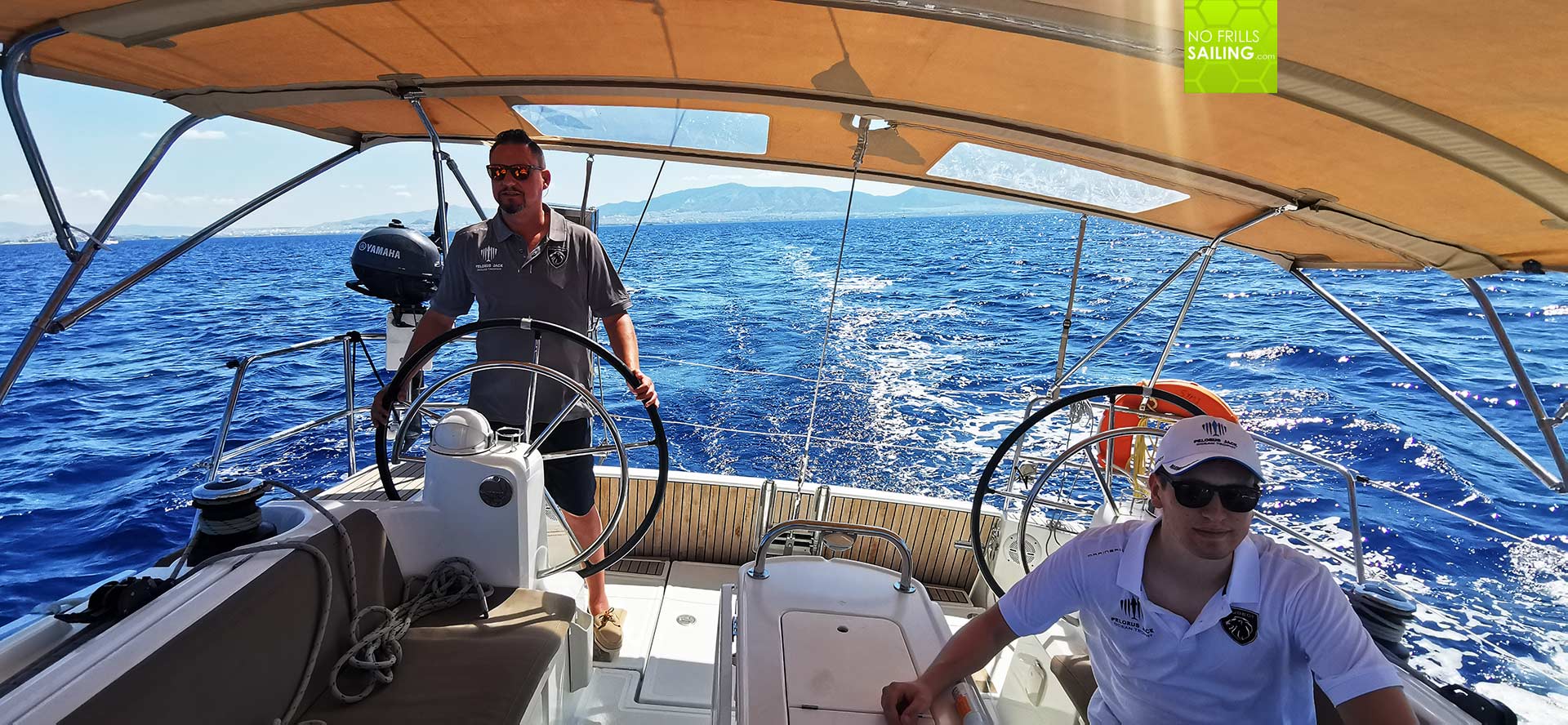
As my crew consisted of relatively unskilled sailors, I decided to put the one with the power-boat experience on the steering wheel: At least he knew what starboard/port meant and what I meant with “luffing” and “bearing away”. The kite-surfer was put to the main-sheet station as trimming this full-battened main was done by sheet and traveller (which was the biggest plus of SYMI over most other oats) and I put the most inexperienced guy to the Genoa sheets. Well, let´s go!
A bumpy start
We arrived at the starting line third-last. This was good and bad at the same time: I had used all the sailing time to here to train my crew to being able to at least minimally follow the essential orders. We practiced tacking a few times, which in itself involved steering, working the winch, luffing the boat and putting her on the three main paints of sail. It worked quite well and I was confident that we would at least be able not to make fools of ourselves. The aim was to be better than their colleagues on the other Peugeot-boat. As starting time neared, I maneuvered the boat away from the bulk of the fleet. My tactic was to try a “time-to-distance” start from far away.
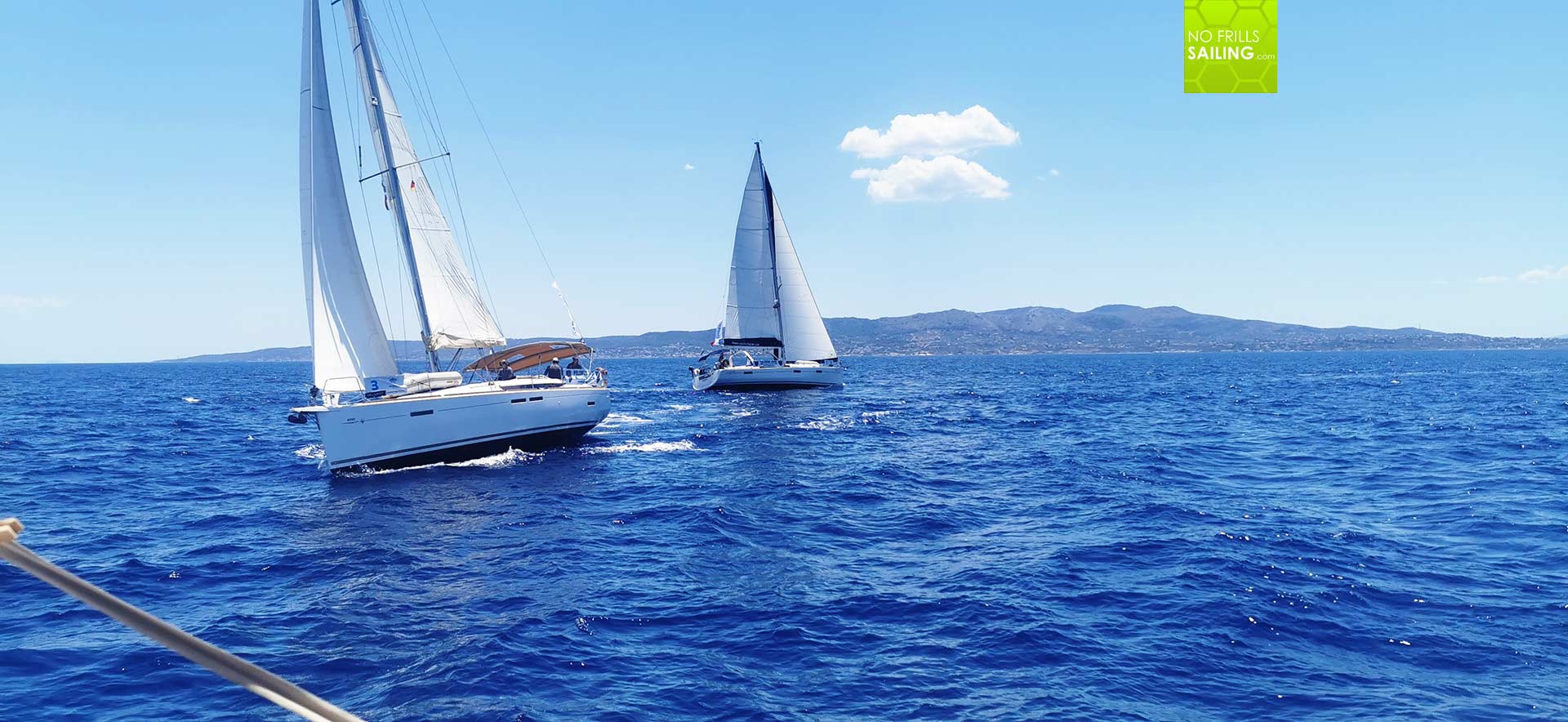
So I set the boat quite behind the starting line which was the RC-catamaran and a rib as pin-end with a large buoy. 1 minute to start we´d hoist all canvas up and try to circumvent the main field that was cramped near the starting line with mainsail up, all eyes on themselves. It all worked just fine, I had all sails up and the boat on port-side tack sprinting upwind towards the starting line. Well, “sprinting” is a bit exaggerated: As we´ve had only 6 to 7 knots TWS, our speed was a mere 3 knots. Perfect for a first-timer crew and nevertheless thrilling anyways. But then it went all down …
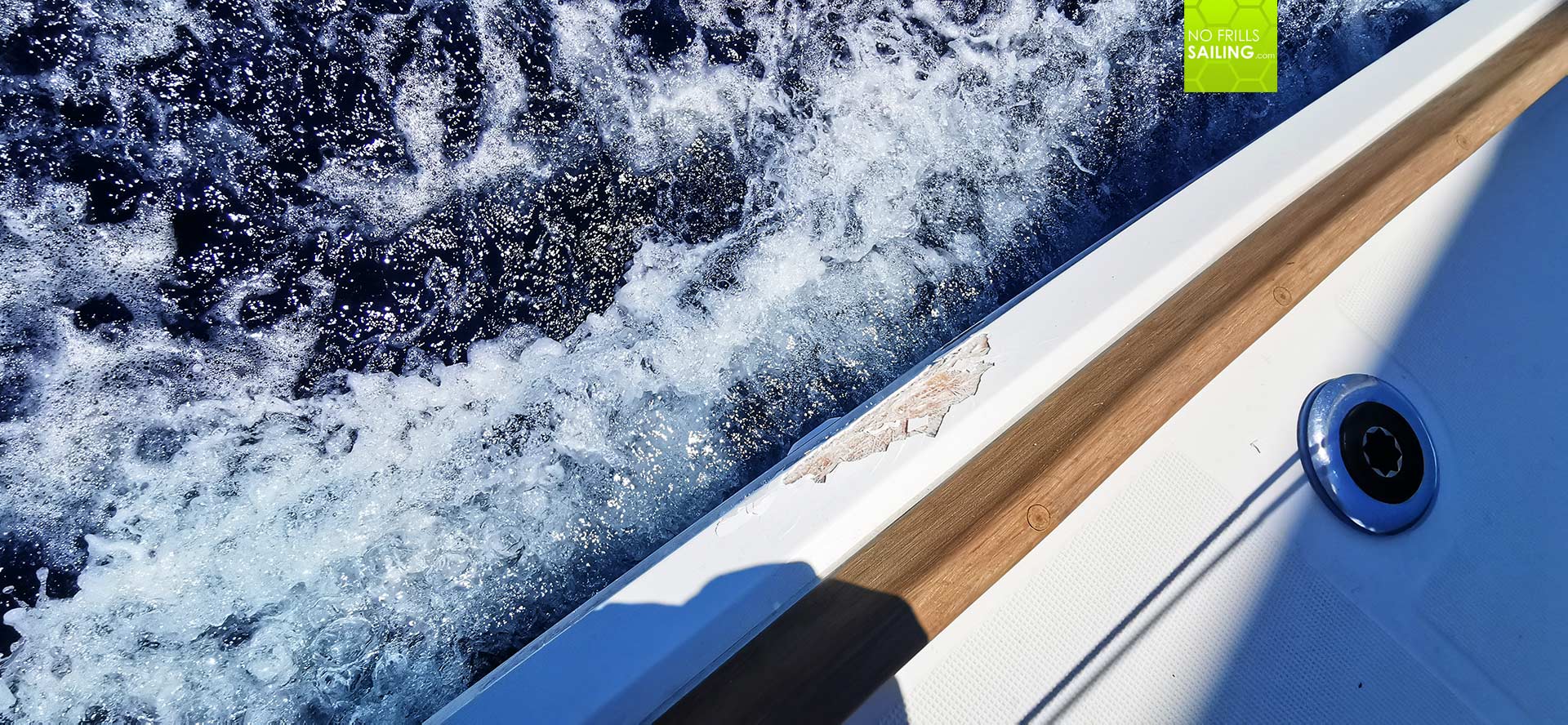
As we approached the starting line – portside tack – I explained to my crew the collision avoidance rules. As we´ve had our boom on the left side of the boat, we had the right of way. “Stay on course!”, I said to the helmsman as a fellow racer approached from port side, boom right, wind from port. He was the one to give way and change course. I explained, as we came nearer and nearer, that this was “psychological warfare” that was part of the regatta-game and as I knew the skipper on that boat very well (holder of many offshore certificates and a skilled sailor). Well … we collided. No maneuver of last resort, no yelling and nothing cold help prevent the collision. Luckily, it was just a bit of Gelcoat, but an embarrassment overall!
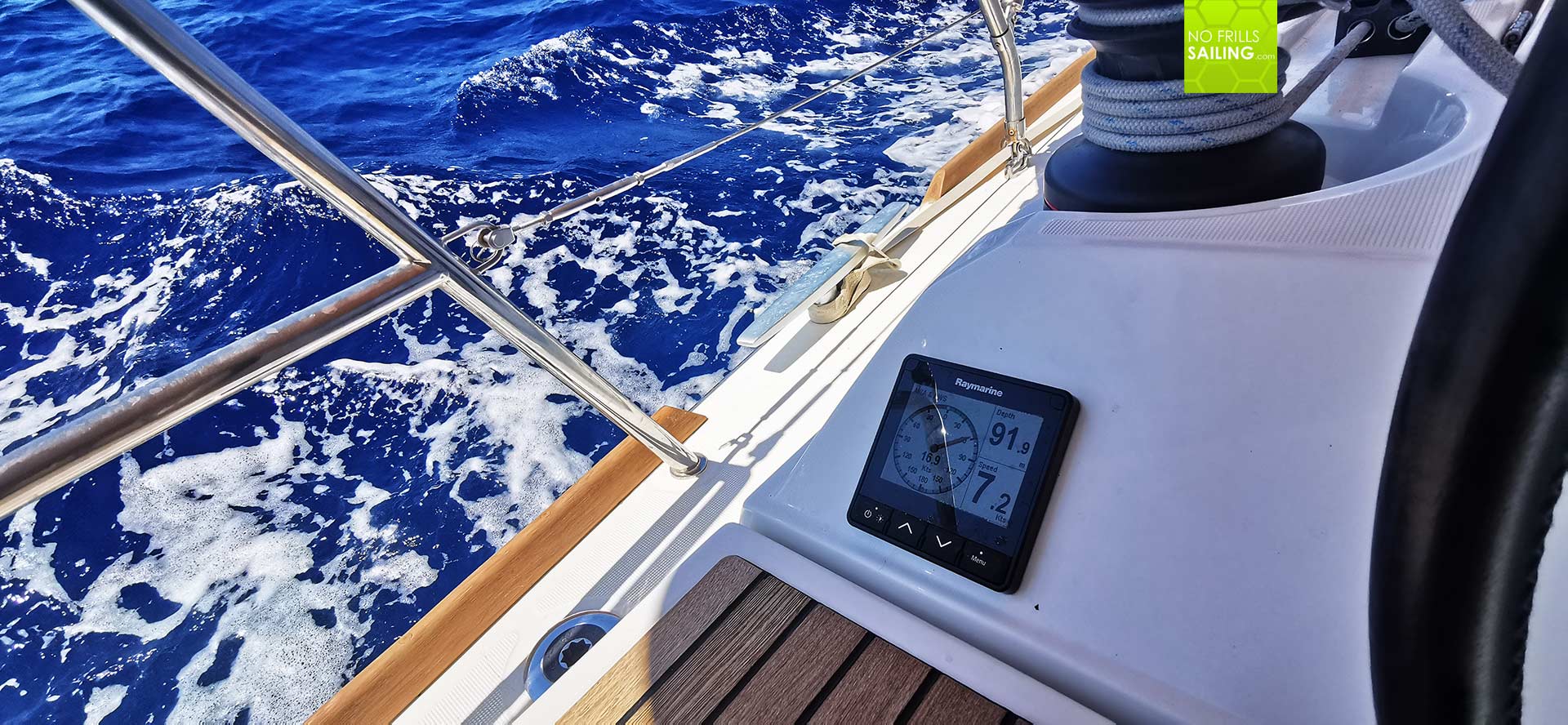
Nevertheless, we raced on. After the “shock” at the start some wind set in and we could manage to sail over the starting line as 5th (out of 10). My aim to get out of trouble partially worked as we were free to se a course just dictated by wind and destination, not by surrounding boats. We kept all boats in sight and I could see the other Peugeot-team falling behind 10 boat lengths. We managed to overtake some more boats so that we cemented our position in 5th and 4th place. Wind died out soon and returned to a meager 5 to 7 knots. I put us way to windward as I speculated that we´d receive another puff or rising wind speeds first. It seemed to pay off as we saw two or three boats dead in the water leeward, just 500 meters away apparently there was no wind at all.
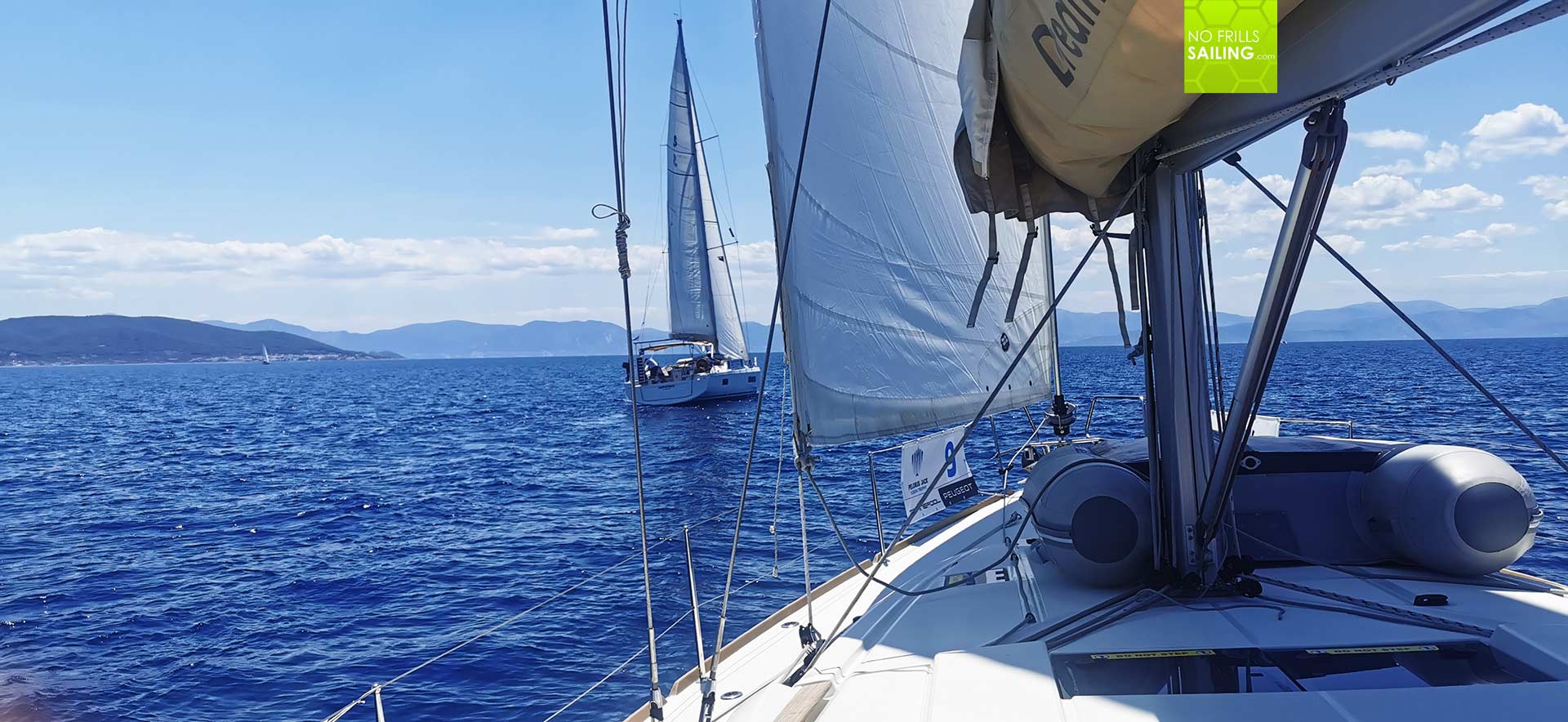
Rounding a small island before sprinting to Epidaurus, we had to make another strategic decision: Join the 3 boats before us which were sailing way leeward or keeping our course, going towards the island and hop for a cape effect that would act like a wind-booster and finally make sure that we´d catch one or two more boats? After discussing the options, we went “all in” and decided not to change course but to try and gamble. This raised the tension aboard and I felt that my crew began to smell “blood”.
The nice side of racing
All seemed to work out just fine as we slowly – but surely! – began to overtake the fourth place. Just in front of us, in third, tacked to joing the others in leeward and apparently began to slow down. After another 15 minutes we´ve had them too. So we inherited third. Overtaking the second my plan began to pay off: We were now right next to the first place on second (but approximately 10 boat lengths to windward). “If we now get the desired boost from the cape, just a bit more wind than the others have, we will wind this thing!”, I postulated. But, as always, it came in a different way. Over the VHF the Race Committee announced that the finish line had been re-positioned. Right behind the island! “F***k!”, we yelled, luffed her immediately to join the fleet: The whole plan to catch the cape effect winds was dead. In the very same moment wind increased to 17 knots (!) and with horror we saw the whole fleet – before dead in the calm – sprinting to life and speeding up. As this wind reached us three. Four minutes later, we lost many positions. Finally, the moment we catched the wind, we had been passed-back through from second to sixth. What a disappointment!
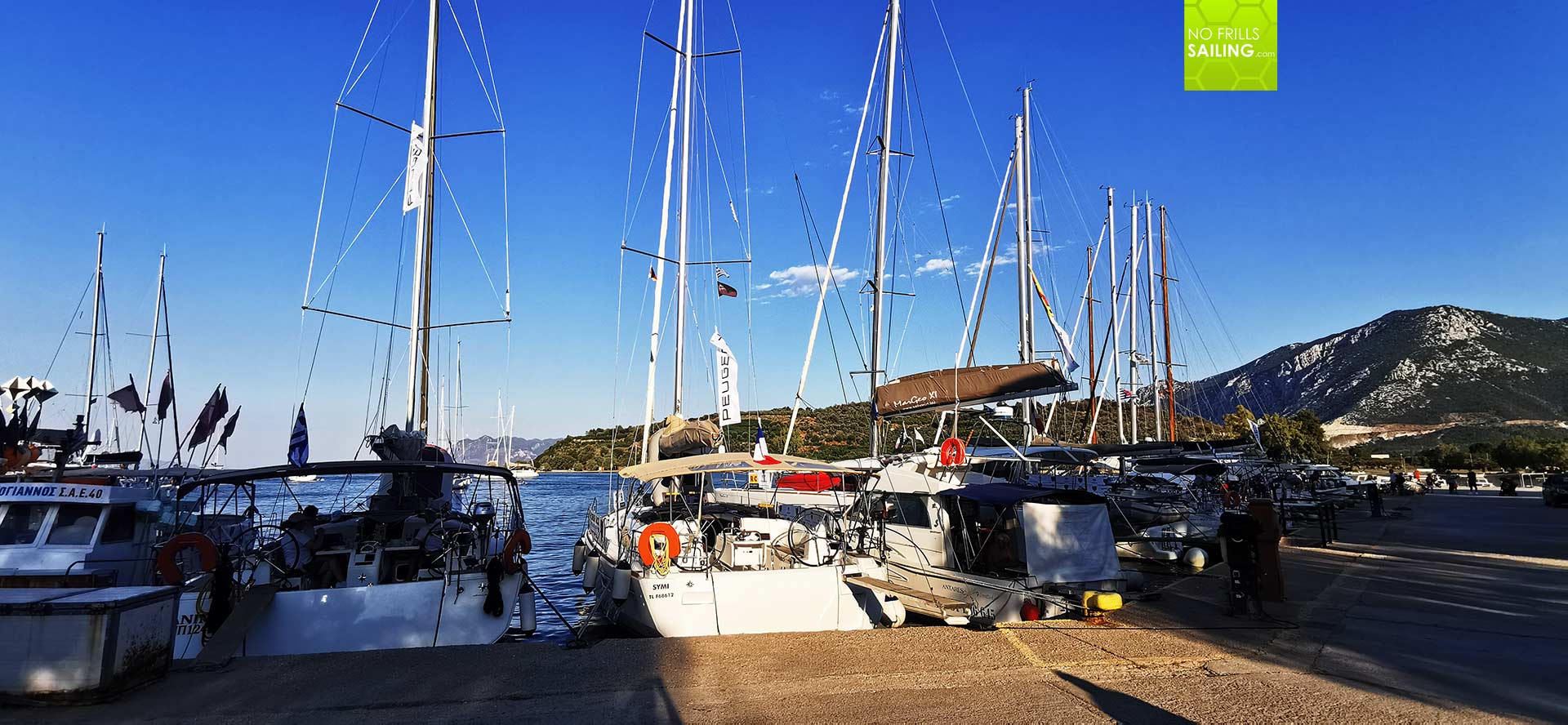
Well, “luck is a whore”, I told the guys on board who understandably were down. Each of them had really worked hard and got pushed to their limits by me to smash the fastest tacking maneuvers, take in the sheets or hold a due course in the shimmering heat. All of them did their share in working their stations to drive the boat, especially in these hard conditions. But the decision of the RC to finish the race prematurely to have the boats in the harbour before sunset couldn´t have have come in a worse circumstance. But I told them, that time you loose – one other time you win.
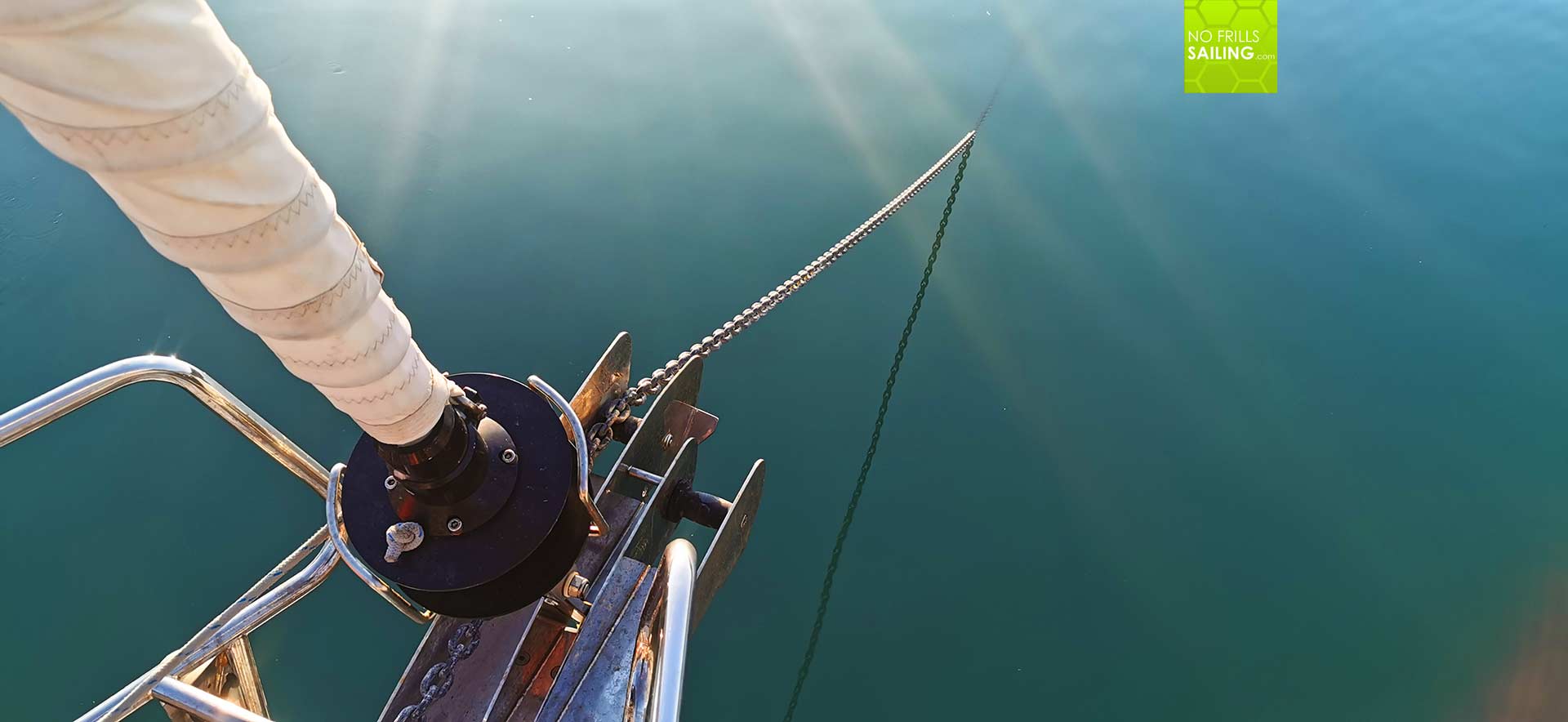
We arrived at Epidaurus half an hour later thanks to the short strong wind – that apparently didn´t last too long. Our first Greek mooring maneuver – anchor and stern first – went off just fine and the boat was tied up at 7 p.m.. The first cold beer of this first racing day was a big occasion and shortly after the disappointment was replaced by pride: Their first race on a big yacht showed that they could do it and, more over, that we indeed had one of the fastest boats in the fleet.
A perfect second race
We spent a wonderful night in a local restaurant and went for a short walk in little, picturesque Epidaurus (of which I will make a dedicated article soon), fell asleep and slept tight till the next morning. For me the racing routine – which is sailing routine essentially – was not a problem at all. I always get up at first light, around 0700, prepare a hot coffee and sit in the cockpit to slowly sip and get my gears lubed. One by one got up as well, our mood was high.
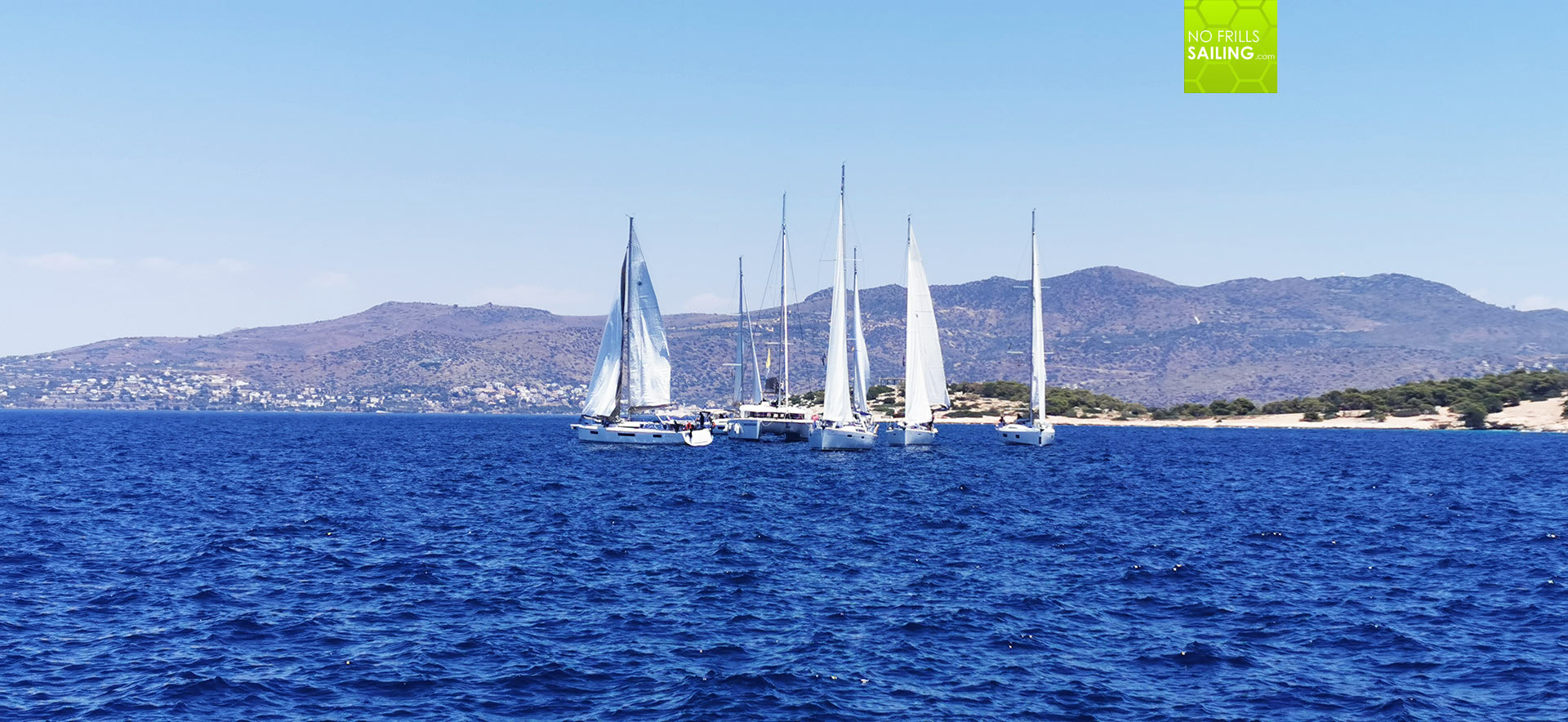
The second race was held in front of Moni Beach, a small Island some 12 miles away. Starting time – so I thought – was set to 1330 and after I misheard an announcement of the RC via VHF I thought it had also been postponed one hour. Well, plenty of practicing time and so we tacked and gybed, practiced rapid 180 degrees course changes and I really pushed the crew. After I felt we had done it, I told the guys: “Let´s sail up and down here to check where there is wind and where is none.” We did so, slowly (as wind already was down to a mere 5 knot-puff mostly) and after we had finished a self-effacing slope, I said: “Let´s practice the start … it´s still one hour to go.” So we did. But my tactics was to start from leeward (because I felt that there was much more wind, than windward). And then the miracle happened …
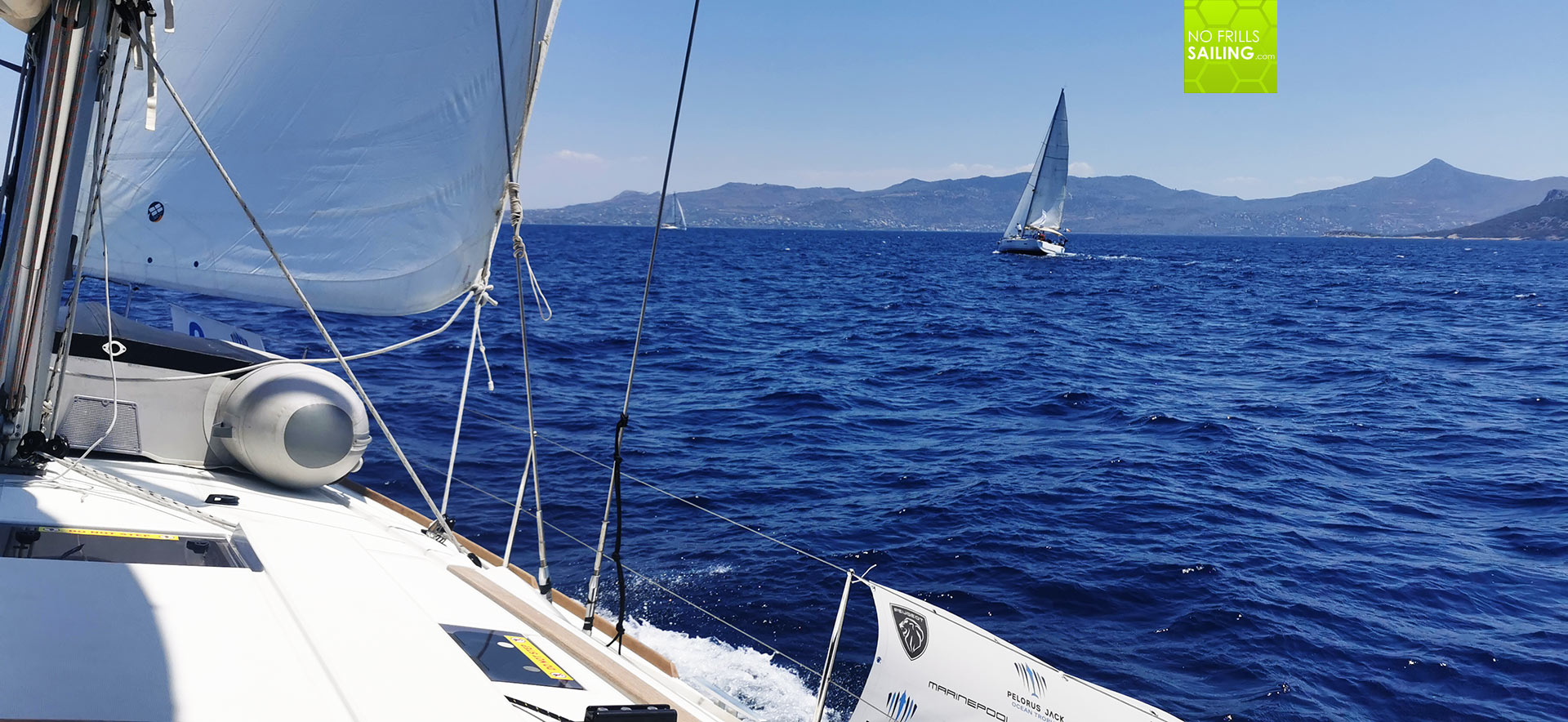
Just as we began, the RC announced the 5-minute-warning: Starting time! Somehow I had misinterpreted one of their messages. It was miraculous as all of the other boats where located outside the starting line (meaning before) to windward near the RC-cat, cramped in one place and trapped by the calm. We at least made 1-2 knots. When the signal started the race, we luffed and arranged ourselves in position 3 after two more boats. The rest was stuck and died out right behind us. 200 metres and no wind: I was so proud, not about the lucky decision but about my strategy to test where there is wind and to stay true to our findings.
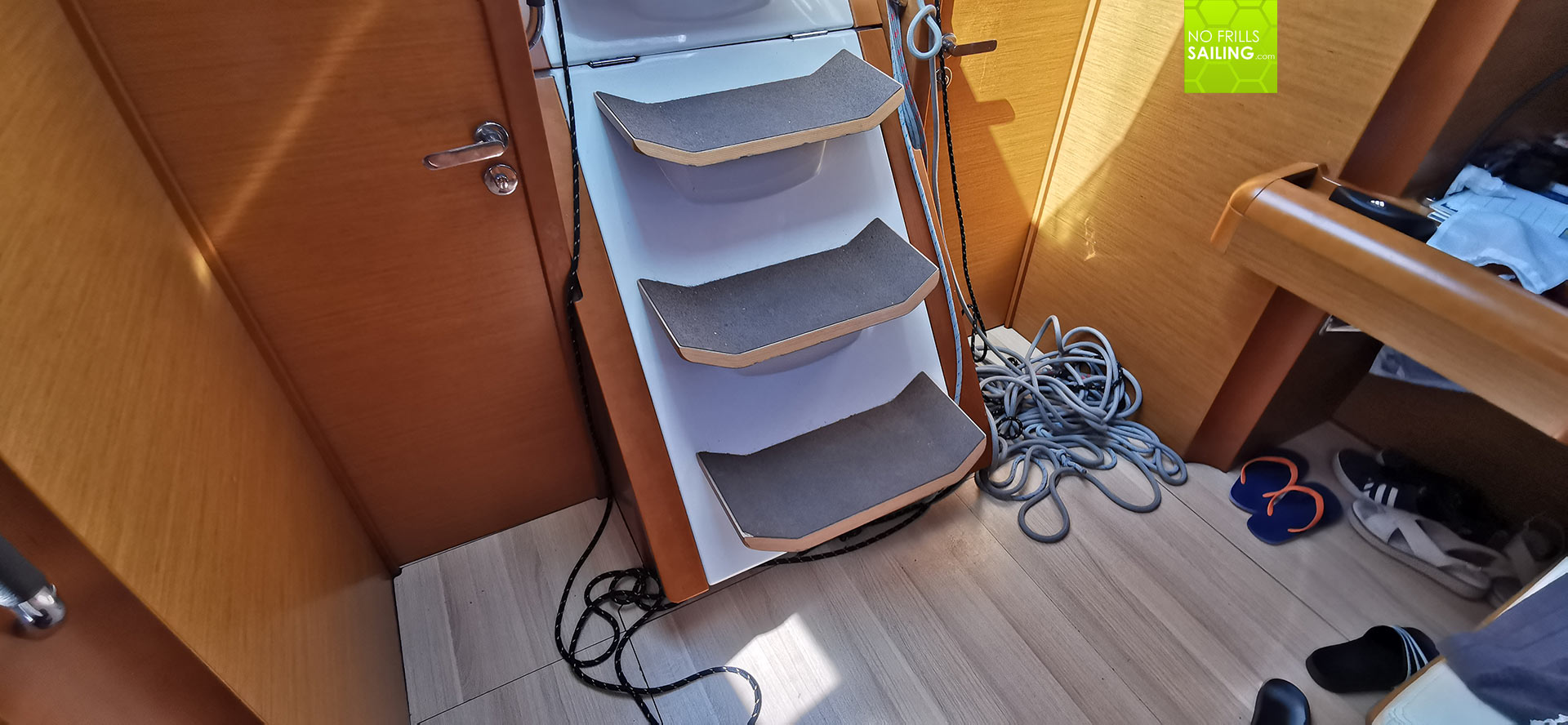
The three boats picked up more wind gradually as we freed ourselves from Moni Island. It was the time of our Jeanneau Sun Odyssey: She was equipped with an overlapping Genoa and a full battened old-school mainsail, which naturally brought more canvas up than the – more modern – Oceanis 51.1 for example. Inmast furling mainsails and small self-tacking jibs, no match. These cruisers in those extremely light conditions were easy prey for SYMI. We soon overtook one. Amazing to see who an older boat managed to develop such a big speed difference and made it look effortless. Just one boat to go!
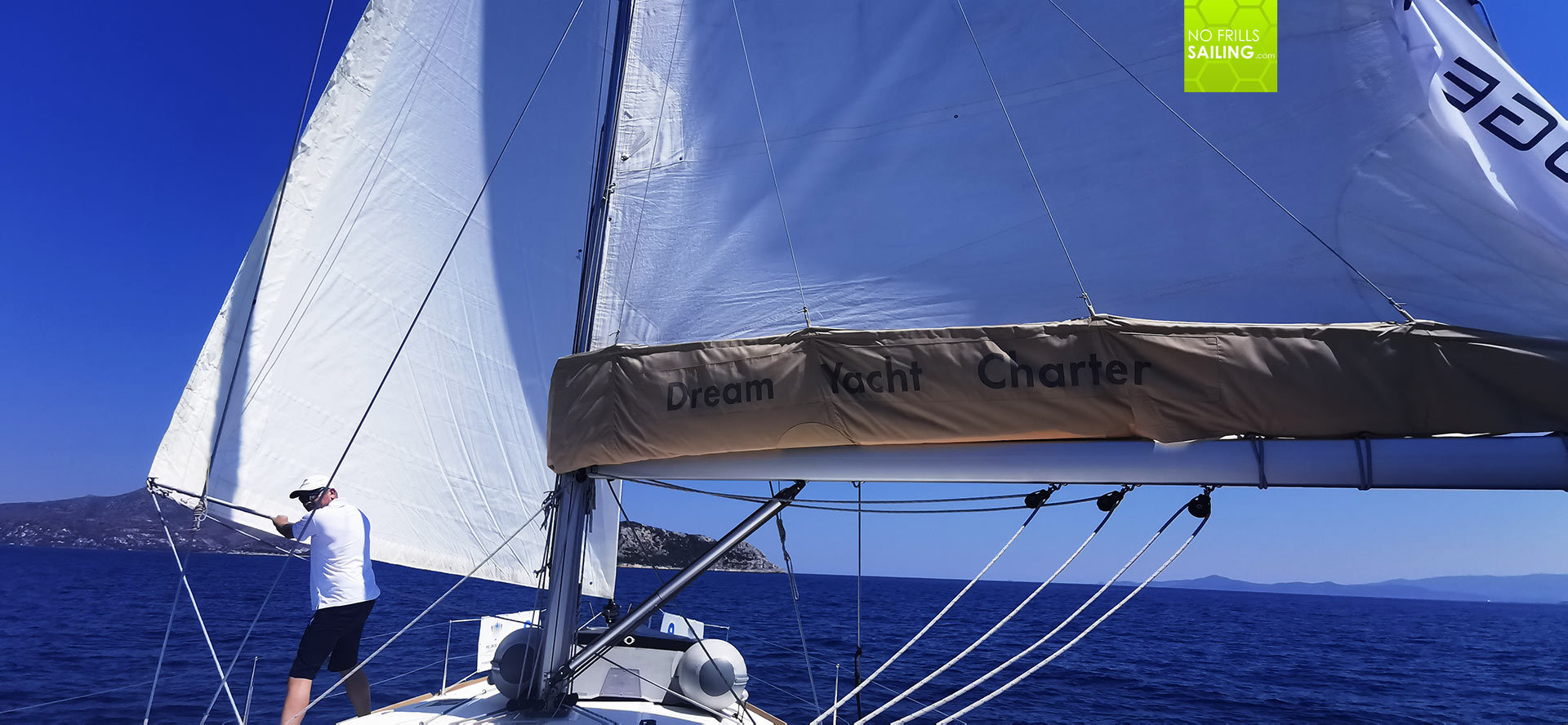
As second race was an up-and-down it was a showdown of sails trim in the first place. After two of my members nearly fell down the companionway due to carelessness, I gave a short lecture in safety at sea (and especially in avoiding rope salad both in the cockpit and down below. The most exciting part was to fine-trim the main sail, which was the “secret weapon” of SYMI. Almost no other boat in our fleet had a mainsheet traveller. So I was able to sheet in the boom to meet exactly the longitudinal axis of our boat, 2 or 3 more degrees high up to windward and distance made good to the boat in front of us. Sadly, wind died out completely after one hour, the downwind-part was a butterfly-drifting. We finished second, but well-deserved and the crew yelled proudly.
A good cause
Full of good feelings, adrenalin and pride we steamed to Poros, our second stage harbour, where this time we moored in the channel directly in front of the old town. Prime position. It was my third visit to this marvelous place and I was astonished that one of the tavern-guys instantly recognized us. A big celebration followed, after finishing second today and sixth yesterday, SYMI would be in a great position for the third race I felt and we all looked forward excitedly to stage 3. But this had to wait, as Poros was deemed “lay day”. Peugeot, rewarding the best car dealers with a bunk on the two racing boats of this VIP-regatta, had decided to not just give 7 guys (3 on SYMI, 4 more on the second boat) this price, but 14. So I had to accept letting my crew go and waited for the second batch of crew-members to arrive.
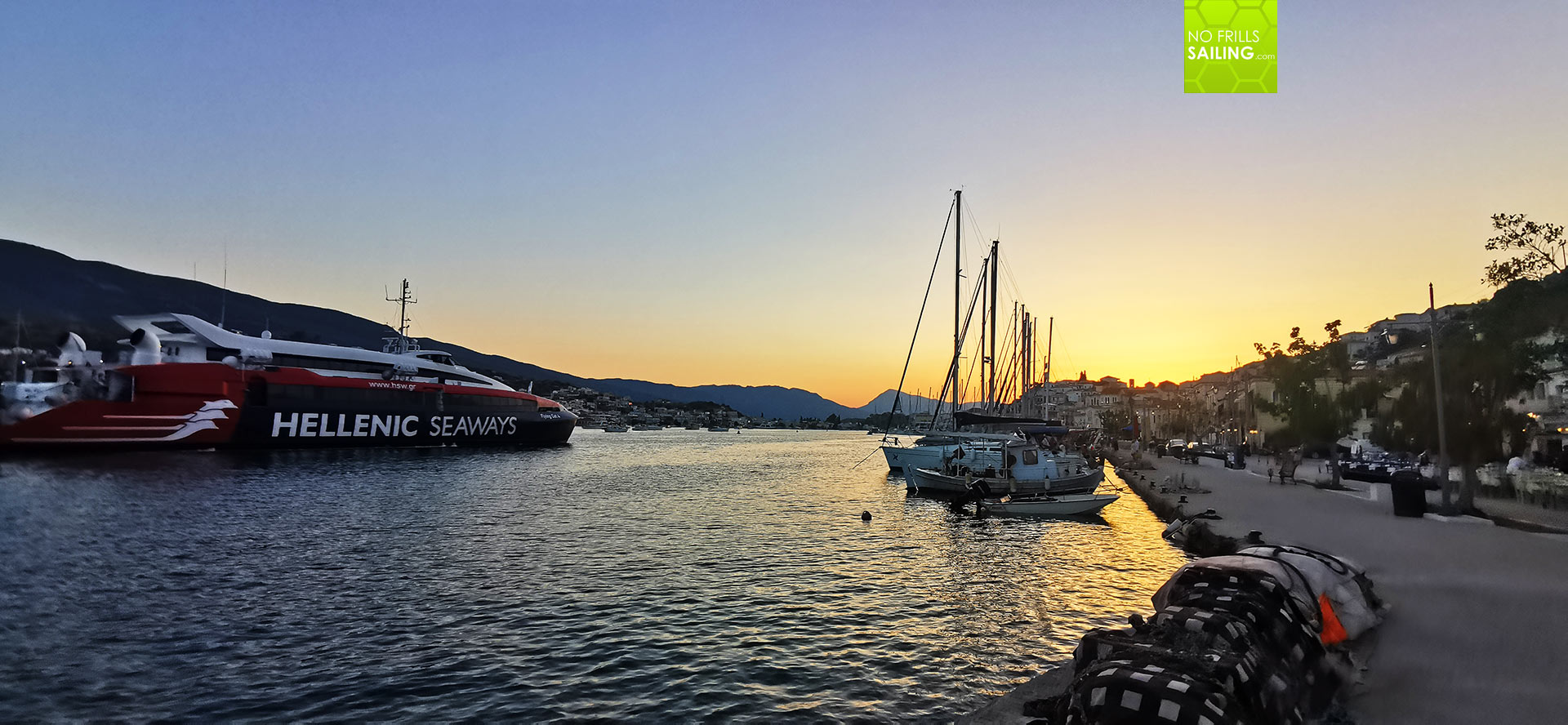
Whilst on the next day temperatures arose to 40 degrees, the actors and the TV-stations accompanying us, went out for an environmental demonstration. The marvelous guys from Aegean Rebreath, an organization that tackles the waste-problem of the Greek Islands, arrived and set up a small cleaning mission in Poros harbour. Some of the actors had to dive down to the near bottom of the harbour and search for debris, ghost nets, trash and rubbish. Some other had been positioned above the divers in ribs to take the stuff and shuttle it to a land-station where it got identified, indexed, arranged in order and finally transported to trash-sites and recycling facilities.
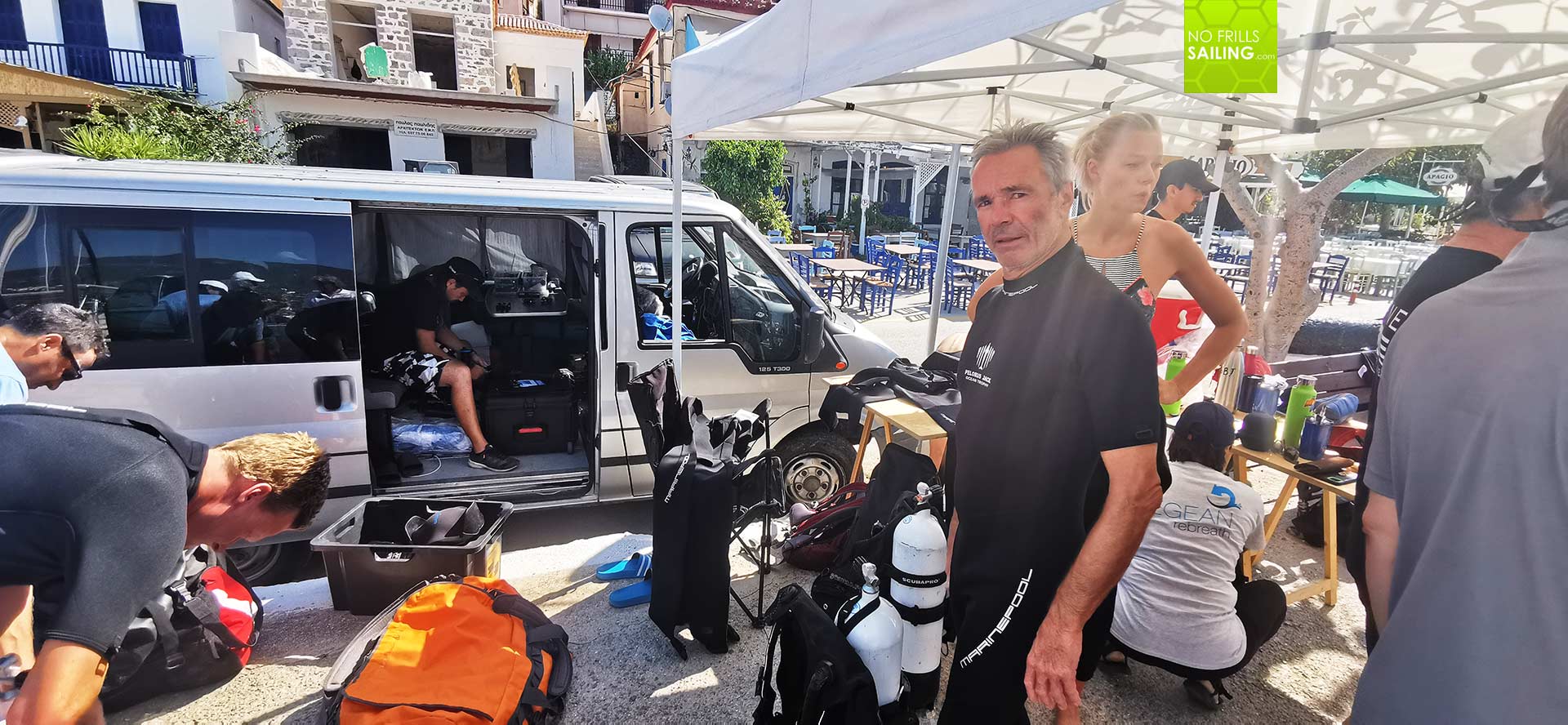
The guys worked from 0900 till 1500 in the burning sun. Most of the 50 actors were there and helped. I saw the amounts of trash taken out and it really touched us all how much rubbish there was in these seemingly lovely waters. The activists from Aegean Rebreath told us that the Greek waters, not unlike any other region of “civilized” littoral areas are nearly hopelessly messed up with leftovers, throwaways and garbage. A sad day. But also a day of hope: The VIPs utilized their impact to show what was going on on TV and I guess that´s a good thing.
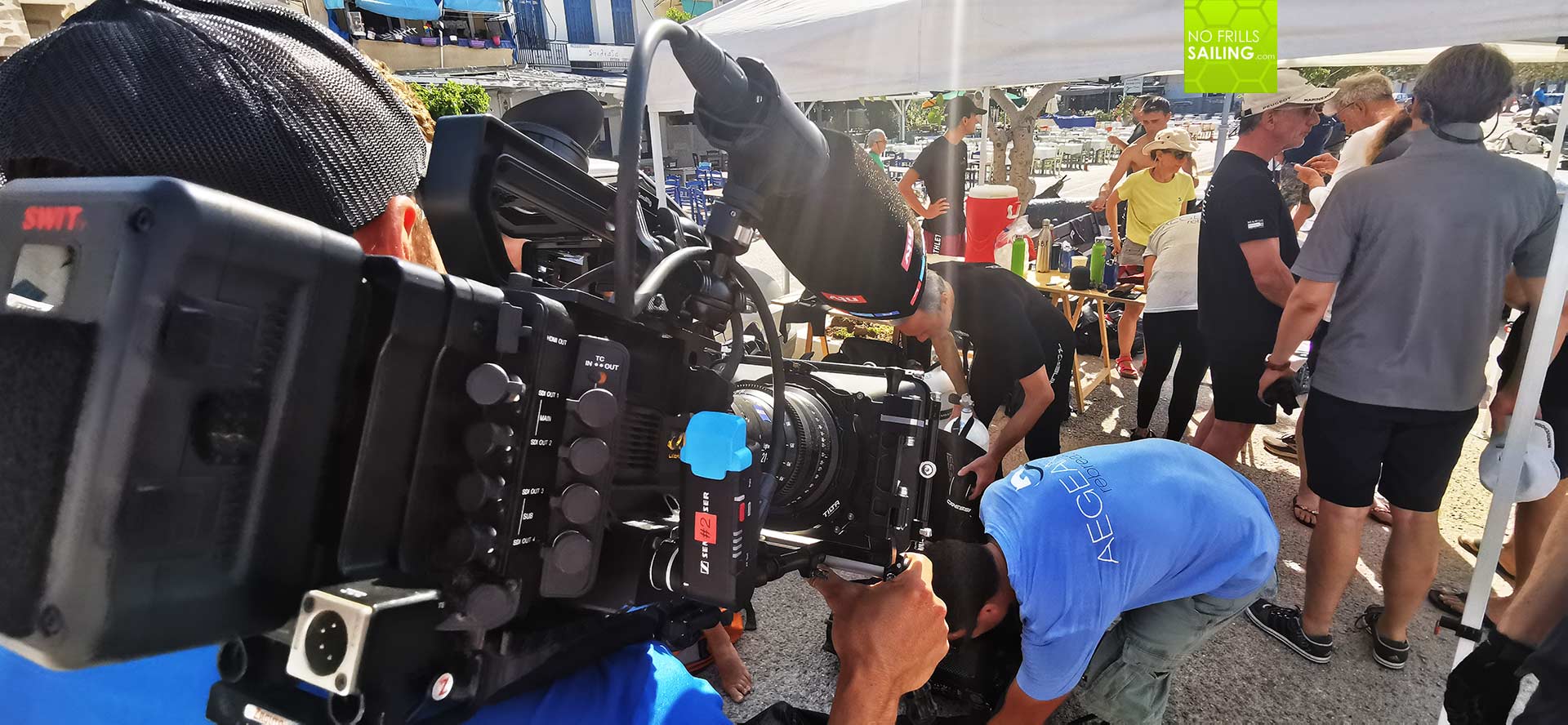
For me, it was time to say Goodbye to my crew, which was a bit sad. Not only had we managed to form a crew that was able to drive the boat and work the stations, but also have we found a bunch of nice guys who came together to do cool things and work together like a trained crew. Now after two races I felt that I had them developed to a stage where we could start to perform really well in racing, I had to let them go – and received three new ones (equally great and sympathetic guys) which had no experience whatsoever. I re-started the quick crash course in sailing the same day and hoped that it wouldn´t be of disadvantage for us. The only good thing was that our direct competitor – the other Peugeot boat – had to cope with a new crew as well.
New crew, new circumstances
The new guys were awesome. An even more sympathetic crew, arriving in good mood, willing to learn and fight for a good outcome. I hadn´t yet received the overall standings but after realizing that 5 out of 10 boats did not finish (better: Did not even start) yesterday, I supposed that we had a real chance to be third overall, even second place in the ranking was realistic. So, let´s go out and have a great race!
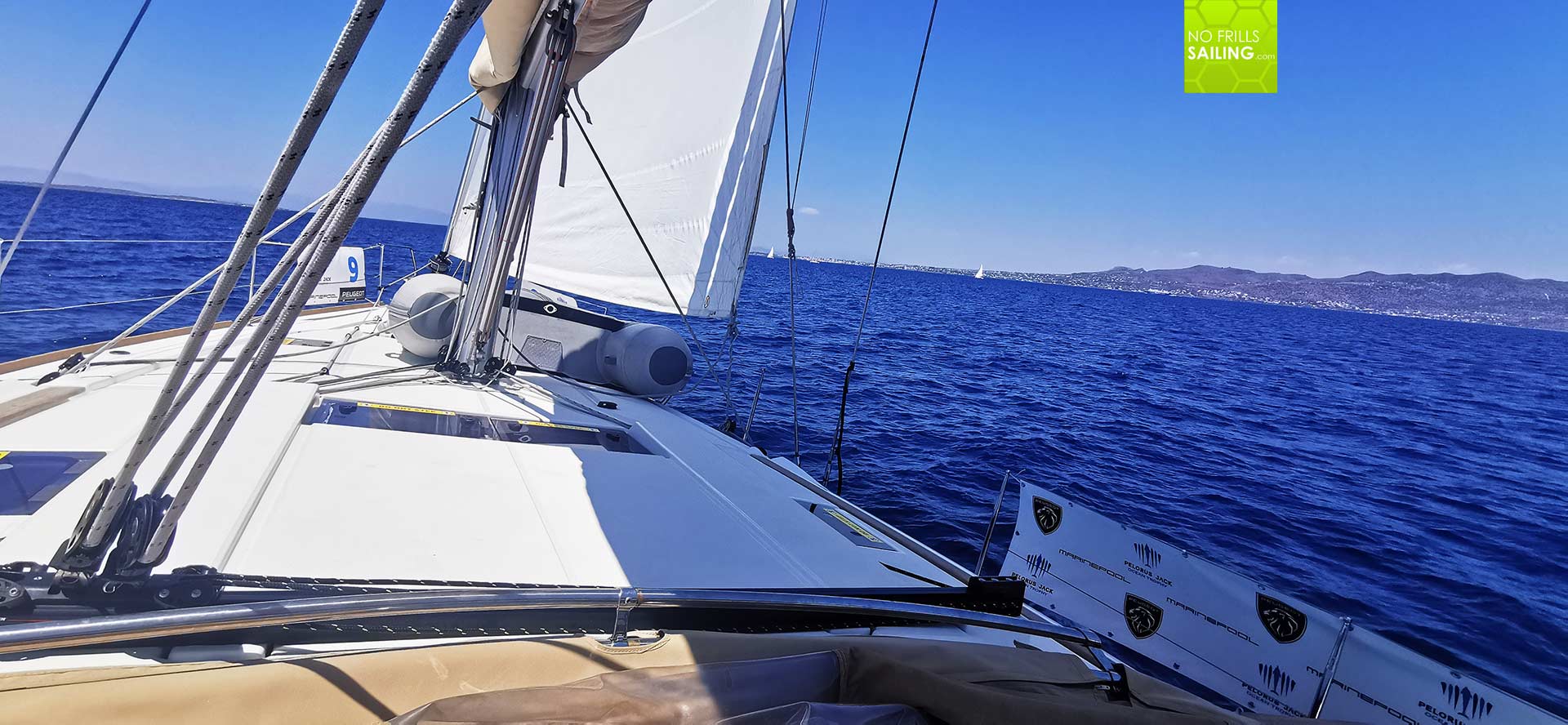
What a disappointment after the skipper´s briefing that morning as the Race Committee announced that no wind whatsoever was to be expected. “Free sailing, guys!”, they told us: Have a fun day, enjoy the boats, enjoy yourself and meet at Moni Beach for a night at anchor. Well, suddenly the mood of the regatta changed. I sent the guys to the supermarket to restock our provisions as we´d had to feed ourselves a whole day and the following one whilst at anchor. At noon we casted off and I was happy to at least find a spot with some wind so that the new crew could enjoy some sailing (and receive some practical training).
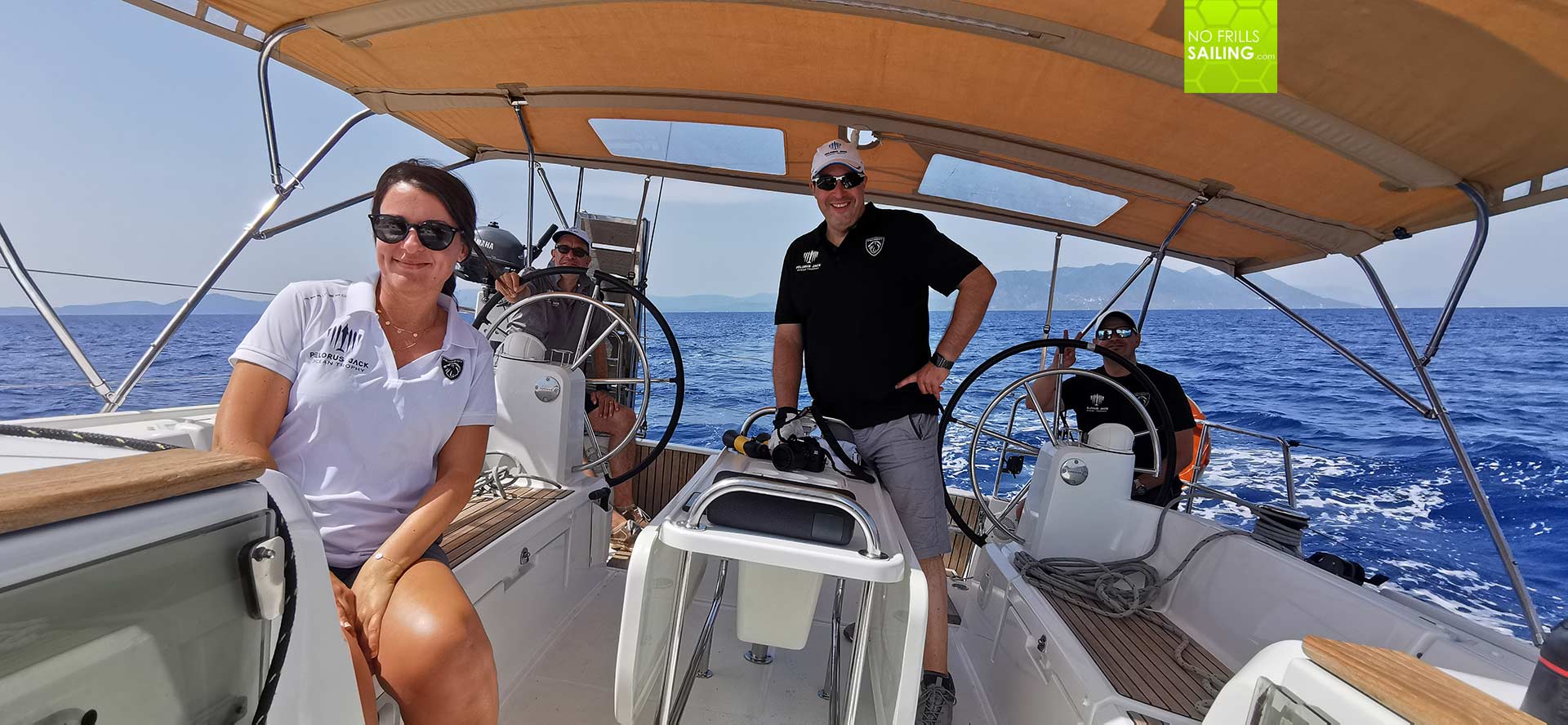
The guys turned out to be very eager for knowledge and after they had asked for it, I restarted the training regime and pushed them to refine tacking time, steer exact 90 degrees-tacks, gybe safely or fine trim the canvas for max speed or max windward angles. We more than one overtook fellow racing crews that day and – beside our disappointment that no race was held this day in spite the fact that there was wind indeed – we had a great time. I more than once saw that SYMI was really fast compared to the rest of the boats, which gave me hope at least for the next day of which I hoped we could have a race indeed.
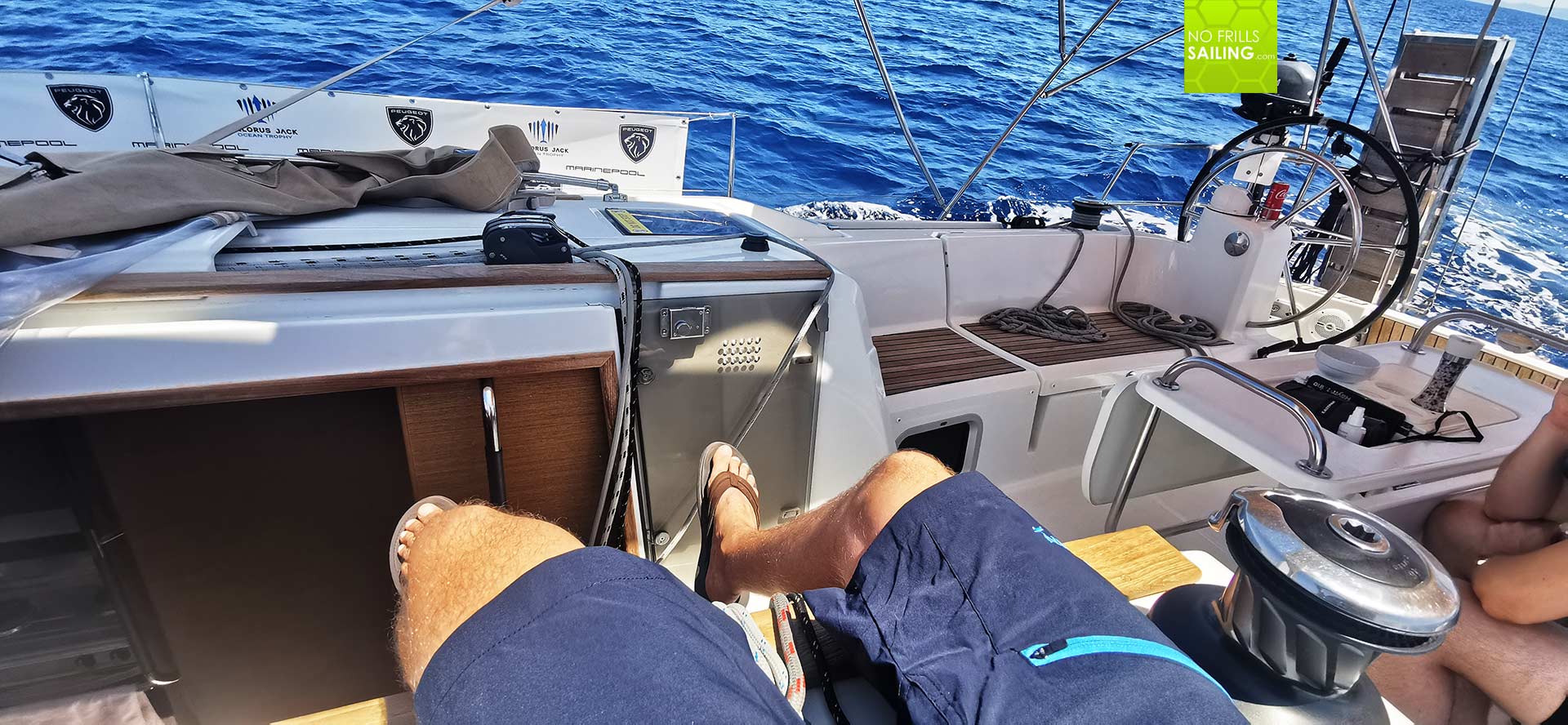
After a great sailing day with TWS of up to 17 knots, driving the boat under full canvas to 8.5 knots SOG, we neared the anchorage which was promised to be exclusively empty for us. But that wasn´t the case, in fact, it was already full of boats. Trying to find 13 berths in nearby picturesque Perdika harbour turned out a fail as well and so we steamed down south to Methana, which was such a beautiful and quiet place that I as well will dedicate an article to this harbour as well. As news made the round that last race day was also about to be cancelled disappointment went through the fleet – just two racing days demented a ranking that could and would have changed surely – and that change would have been better for SYMI. Well, that´s life I guess.
What have I learned?
We headed back to Athens on our last day. Still no race but perfect sailing weather: Hot sun around 30 degrees and east of Aegina quite a nice wind of 10 to 15 knots. As we crossed the TSS the wind further increased to 15-17 knots, driving the boats upwind to high speeds, we did not crack but neared the 9-knot-mark in SYMI, which was great fun for me and the crew.
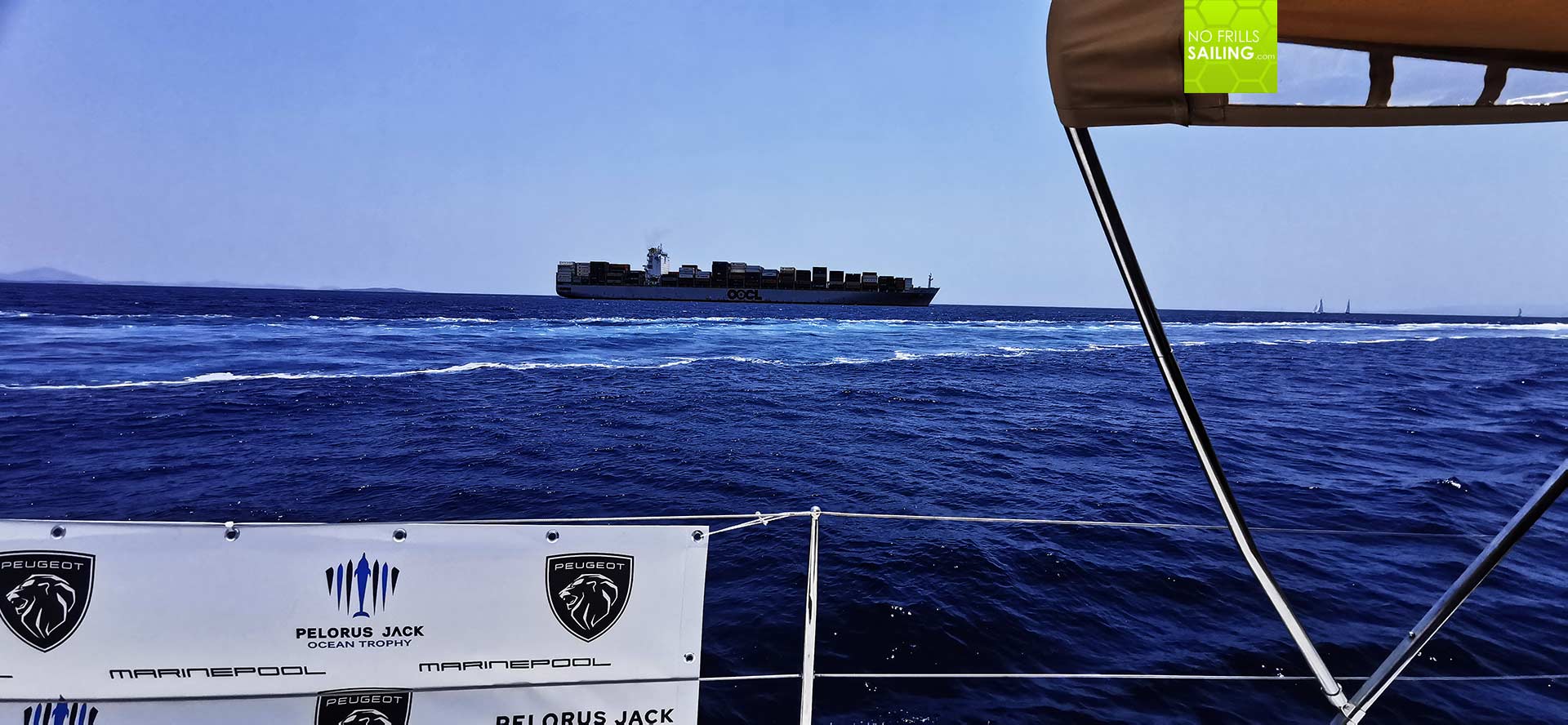
The mood was good but also underlined with a bit of sadness: We couldn´t show the full potential of our boat and the second crew never got to taste the excitement of a race. I felt for them and tried my best to have at least a nice sailing session arranged. Nevertheless, those two real races also taught me some valuable lessons. First: To sit on a modern boat must mean nothing. SYMI was much older and looked a bit dated in comparison to the chique of a brand new Oceanis 51.1. But she was so much faster indeed! I also more and more appreciate the magic of a mainsheet traveller, which really makes a difference in sailing.
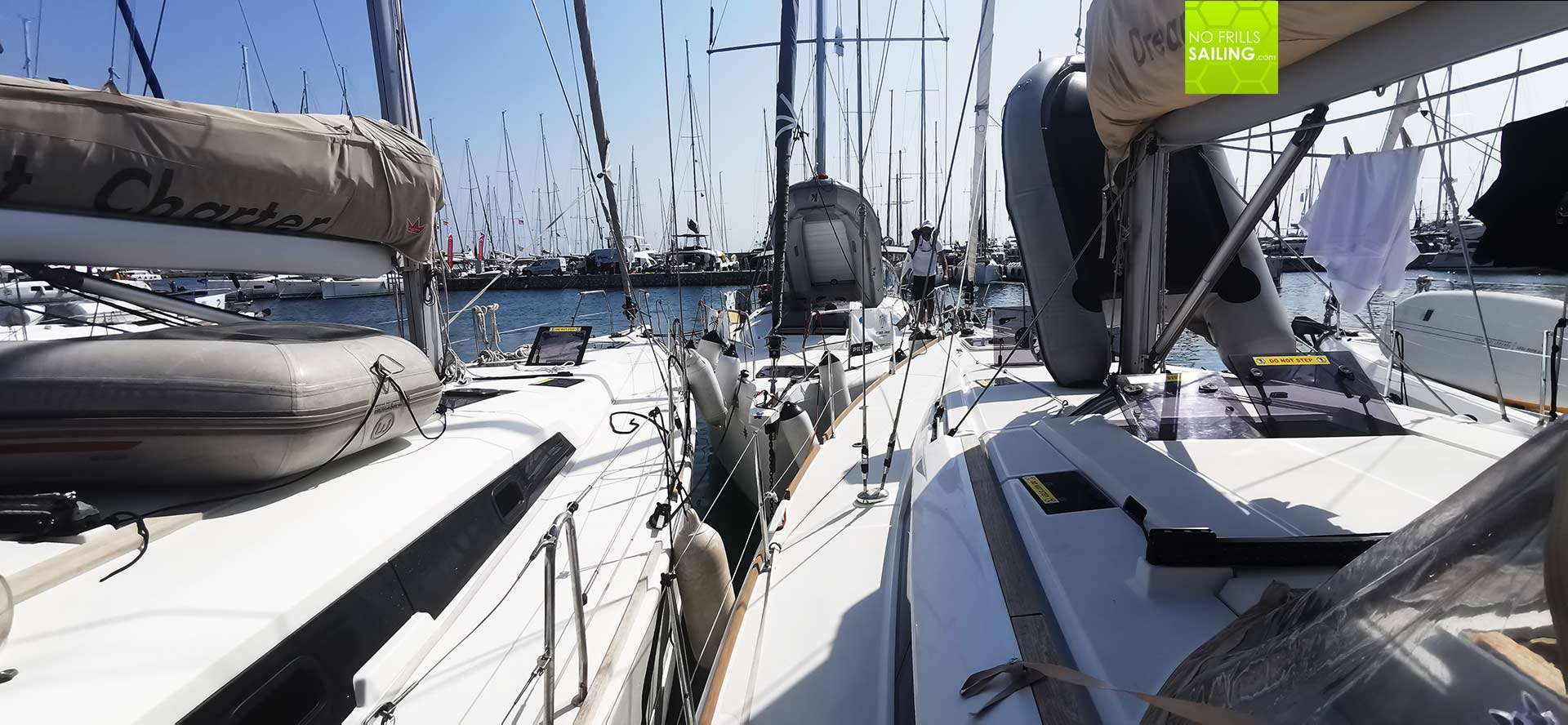
Crew-wise, I learned a lot about forming a crew, teaching the basics, training and practicing. I was able to form a crew within 2 days that surely would have been able to drive the boat in fast mode with dedication, with extreme focus and motivation. I also learned that many of the basics can be done prior boarding: I had set up a whatsapp-group and started to send little info-videos two weeks before the race. That helped to clear safety basics and questions, making us use our little time aboard more efficiently.
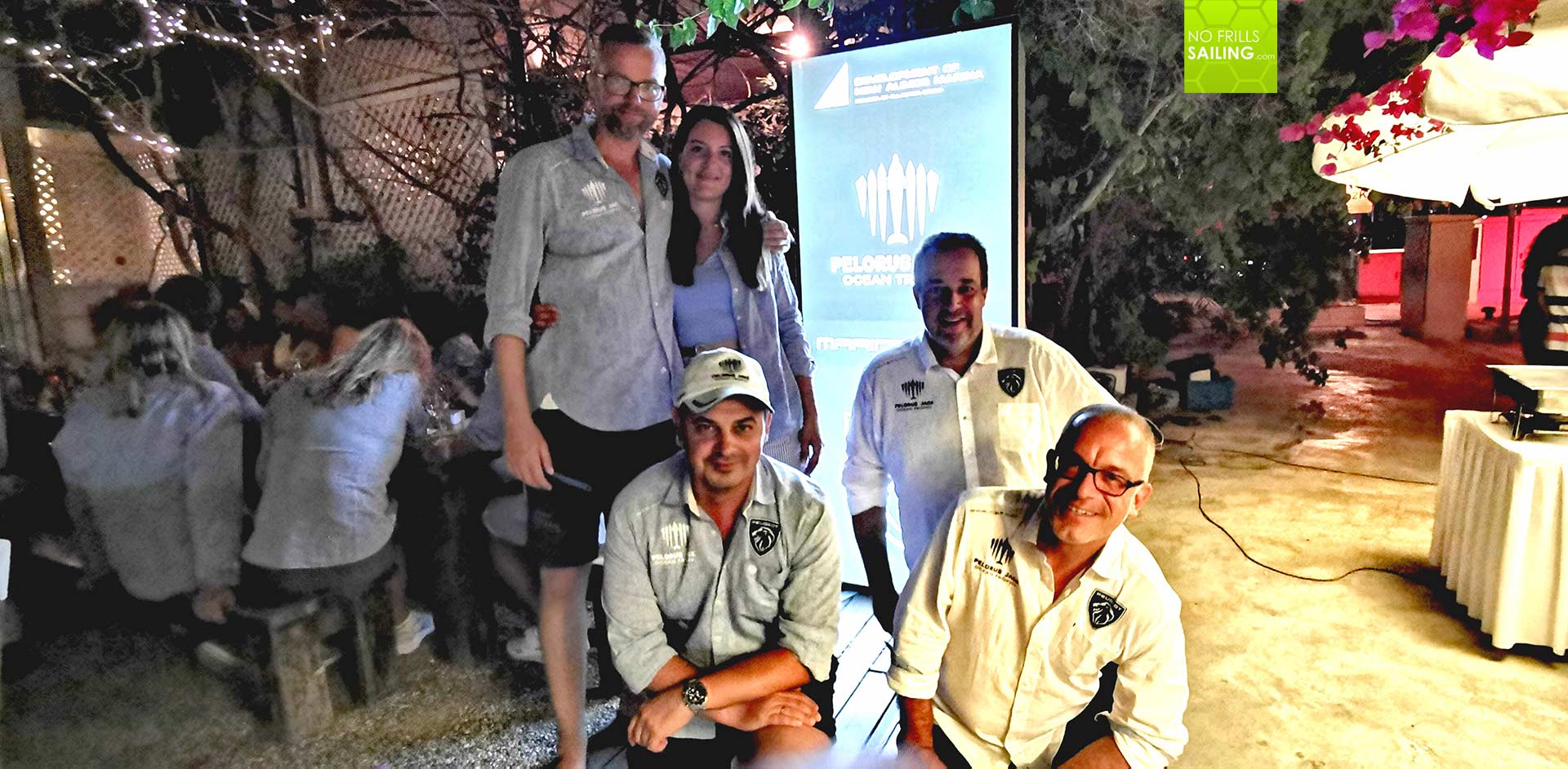
We berthed SYMI in a 22 knot-gust, which made my heart beat a bit faster. Another highlight as I love roman-catholic berthing (stern first with mooring lines or anchor). Sailing big yachts is always great fun for me and since I usually get to drive these boats during or before handovers to clients, I enjoyed sailing SYMI for this intensive week, adding some 120 miles of experience to my skipper-palmares.
Efcharisto, Greece!
Greece is a big, big pleasure! It´s such a nice host nation, friendly people, best fresh food and breathtaking nature (although we had learned that paradise is under pressure). After cleaning the boat and saying Goodbye to SYMIs second crew as well, I went on to spend some more days in Athens, climbing the Acropolis and enjoying the bristling life of that city. In the distance I still could see Poros, Aegina and Methana, which soon felt so far away again. Why must these precious moments always be so short lived?
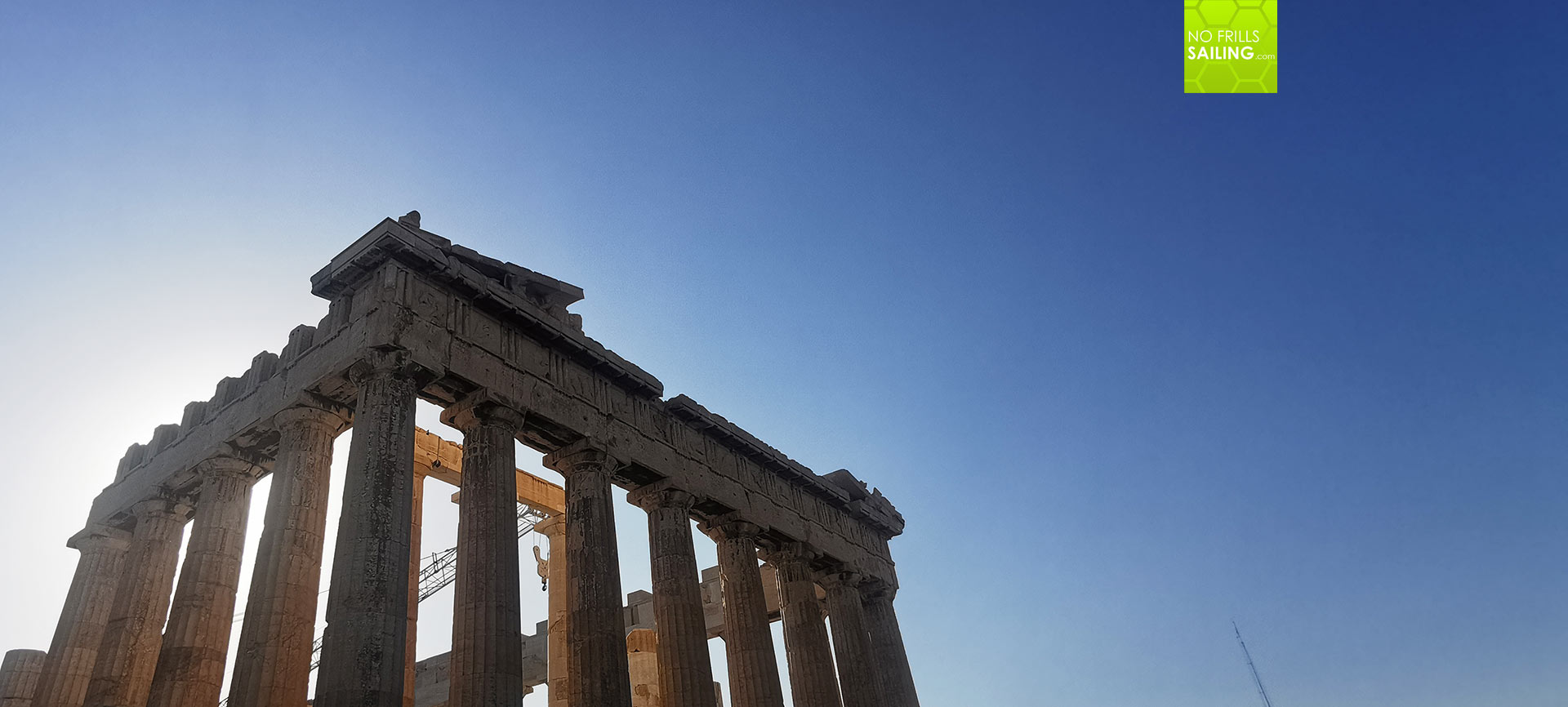
I arrive back to Germany two days later. Welcomed by a warm summer´s day. My own boat mooring in my home marina, ready and eager to cast off. It will be great sailing, of course, but in another style. I say thanks to Peugeot and Marinepool to finally taking on that money and finance the racing-event, despite Covid- and current inflation pressures. It was good to make people have a good time and judging from the features I see on TV about our “Pelorus Jack Ocean Trophy 2022” those pictures alone make many more people have a good time. And in the end, this is what this all was about. Looking absolutely forward to the 2023-edition where, I promise, I will go forward to achieve a good racing outcome as well.
You might also be interested in these articles:
The perfect start of a regatta
How to form a crew and tackle your first sailboat race
At the “Rose of Charity”-race
